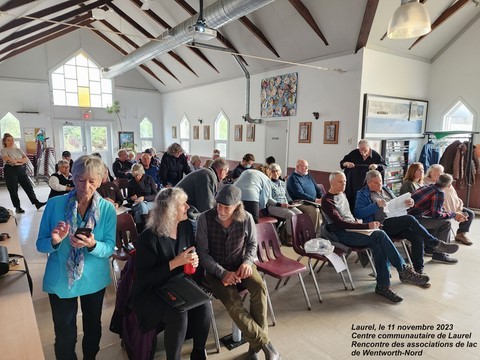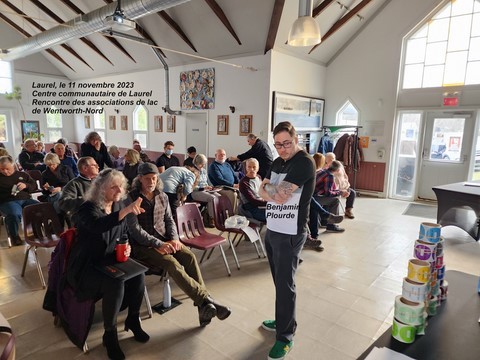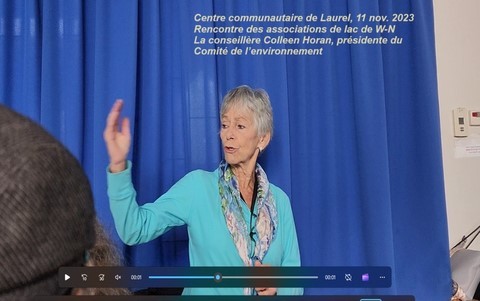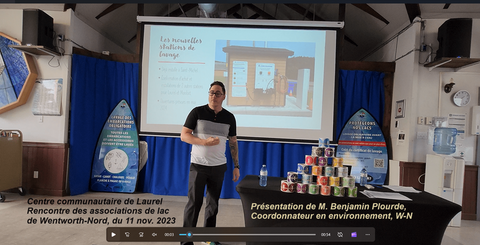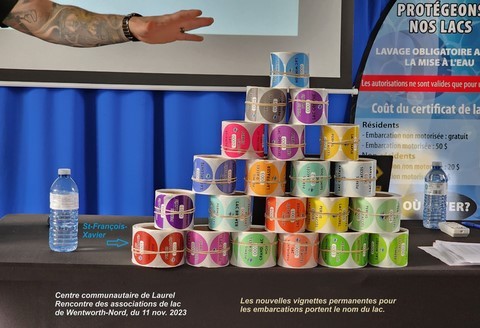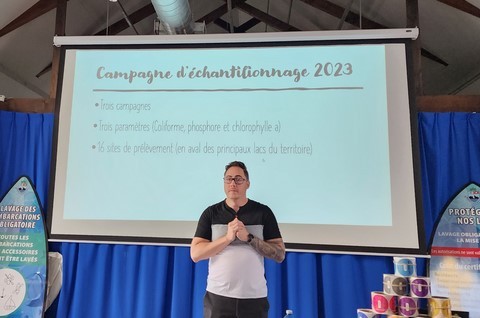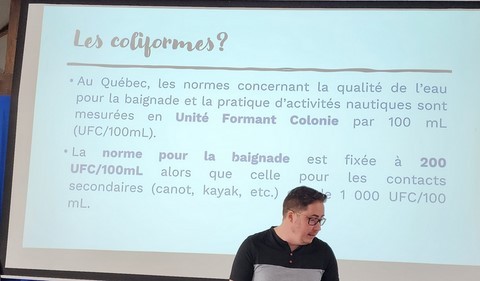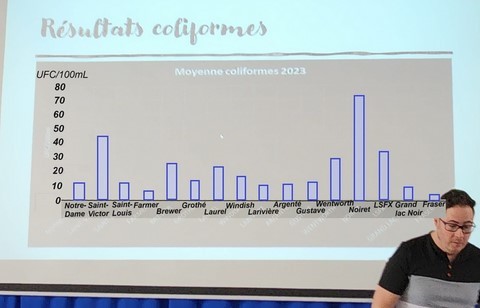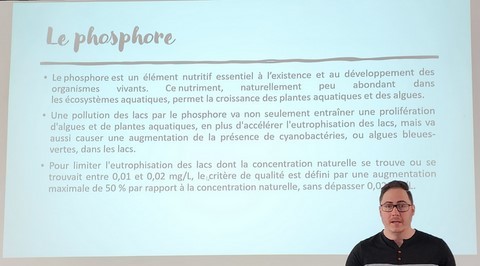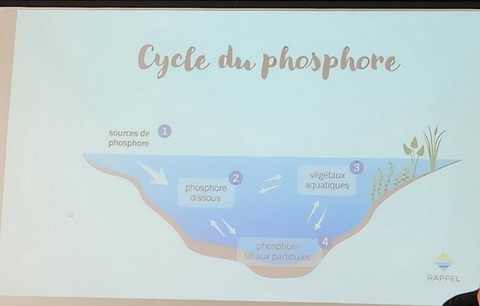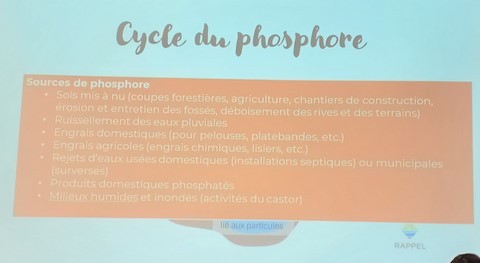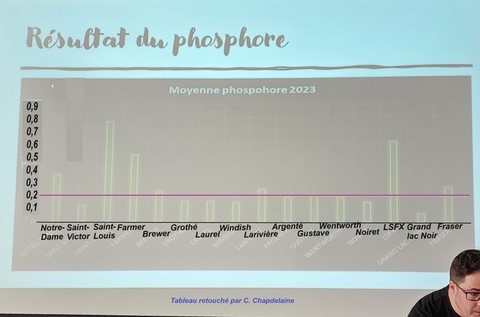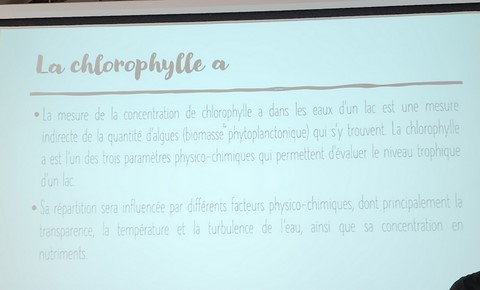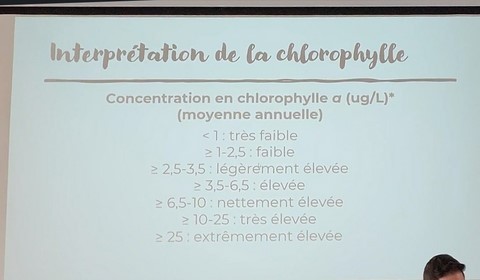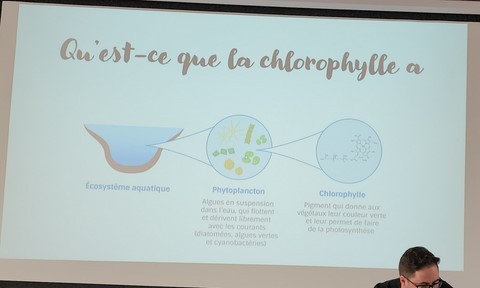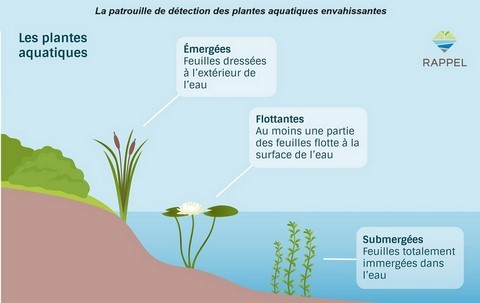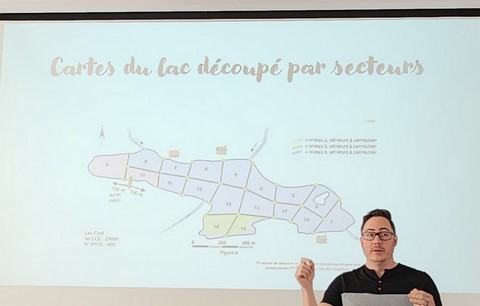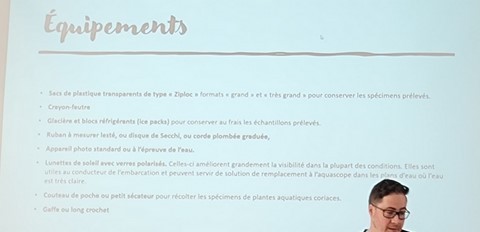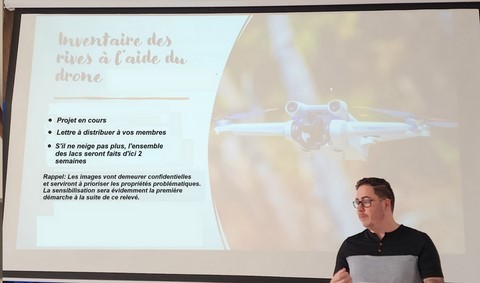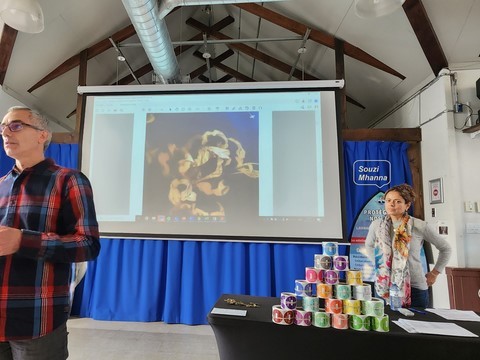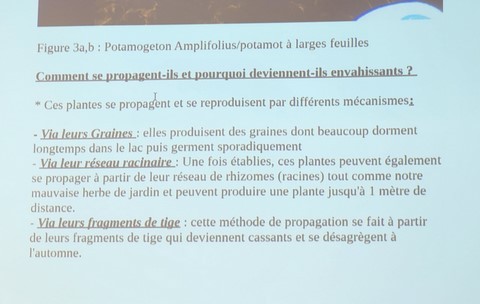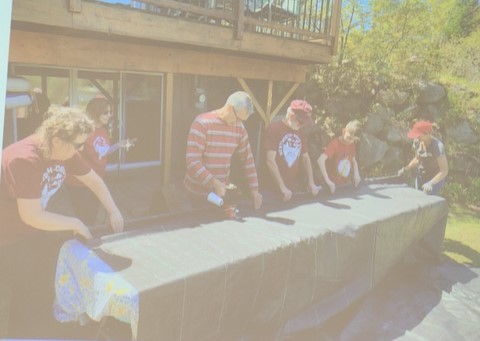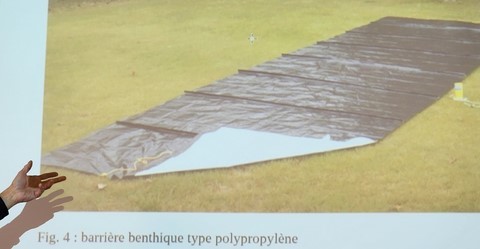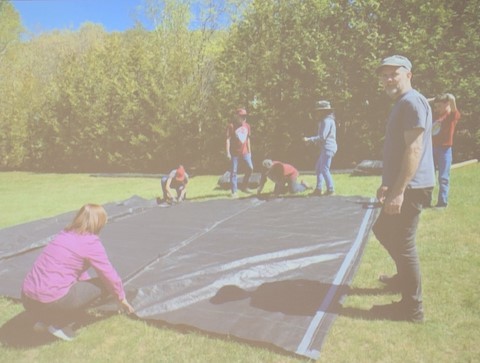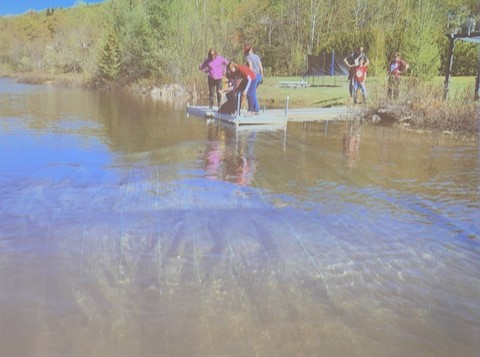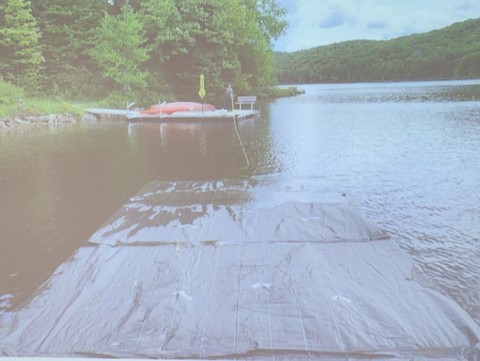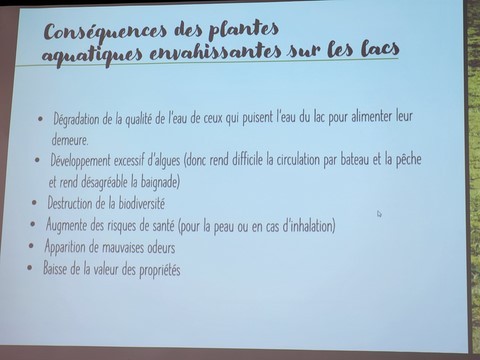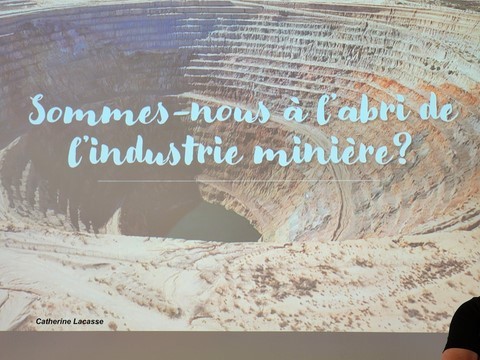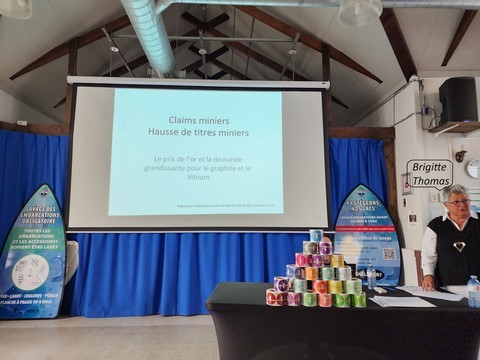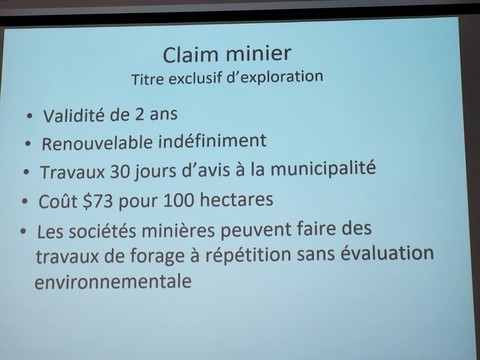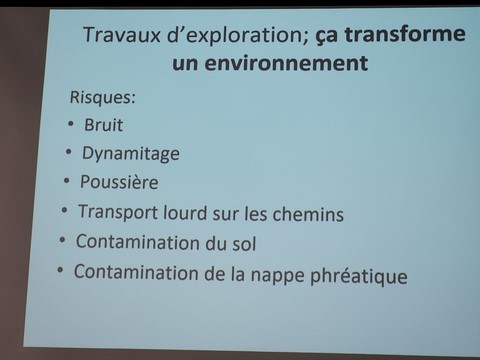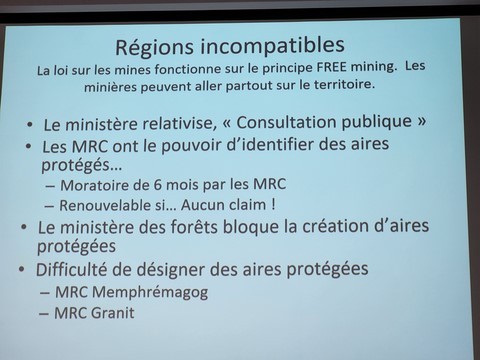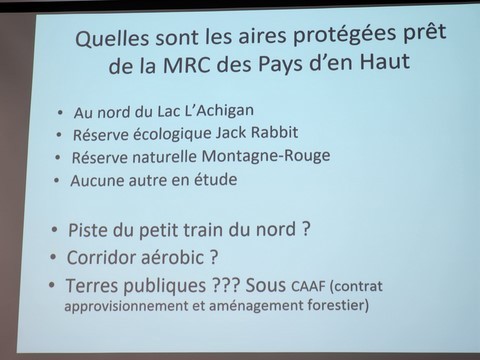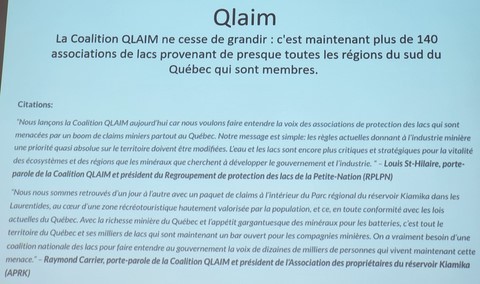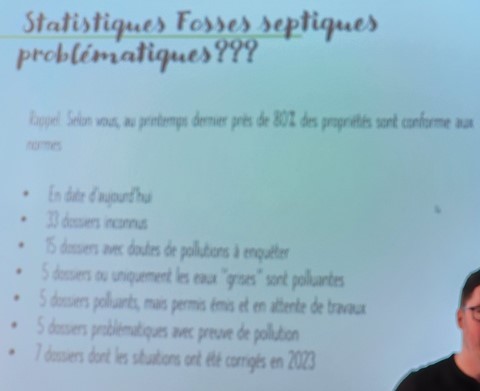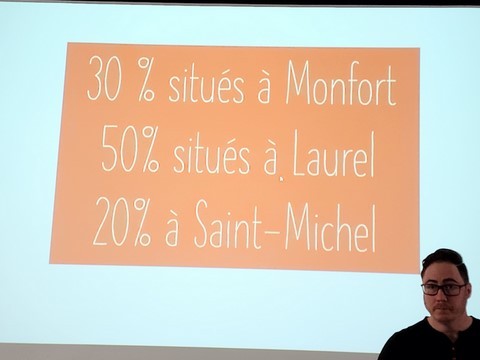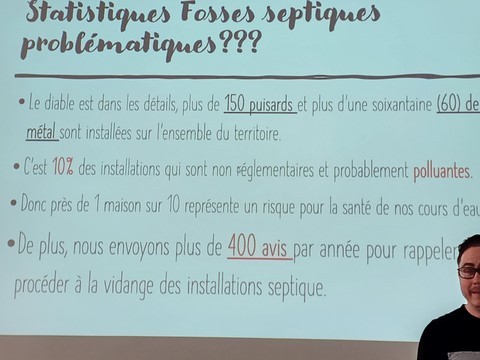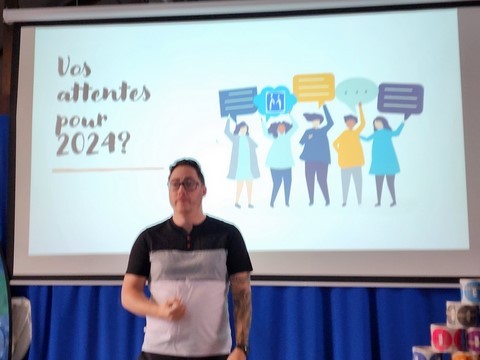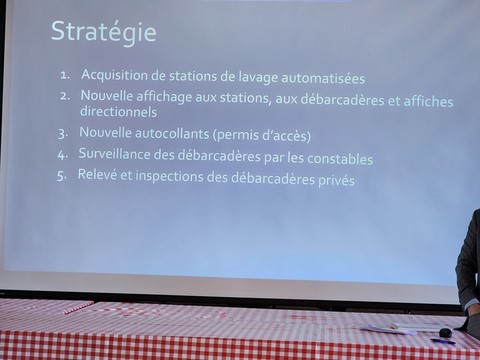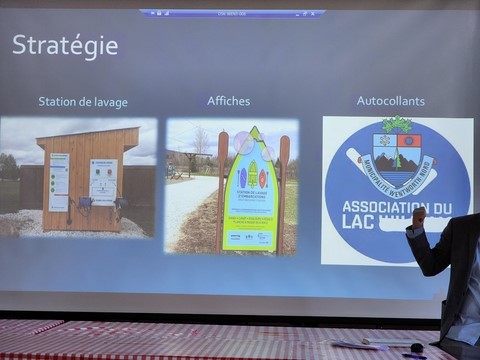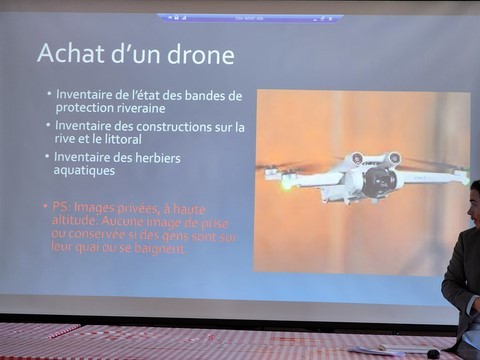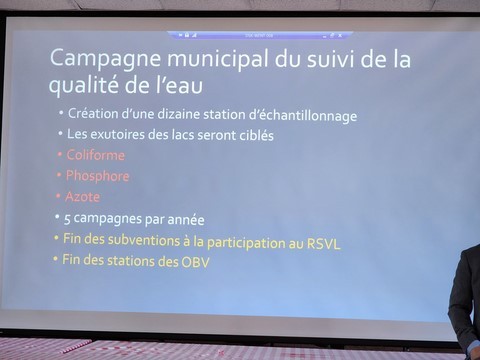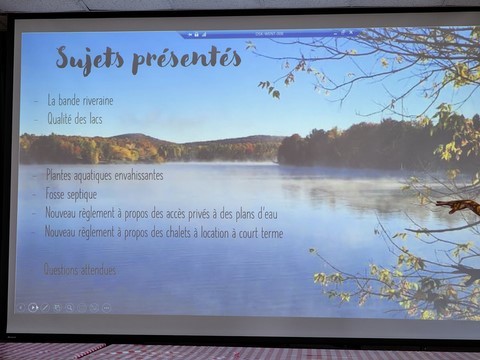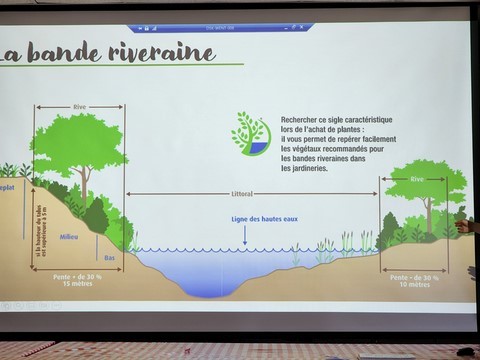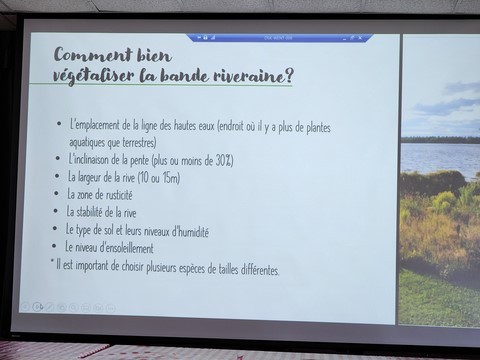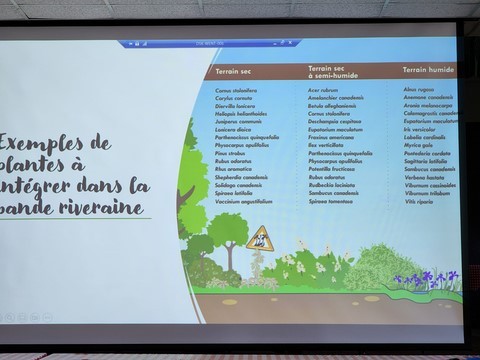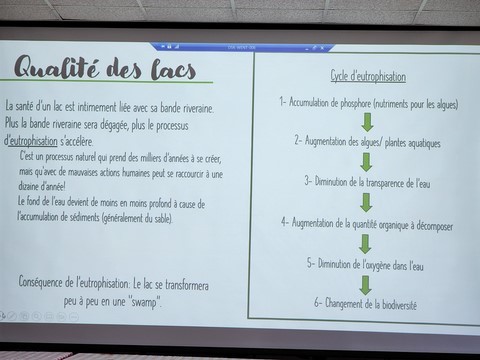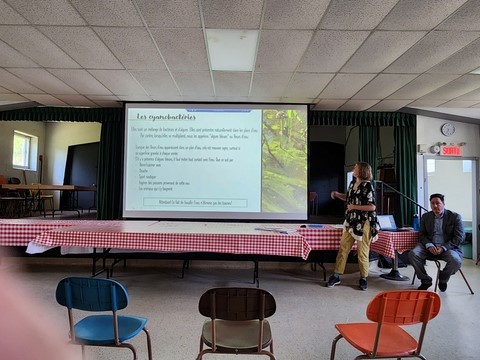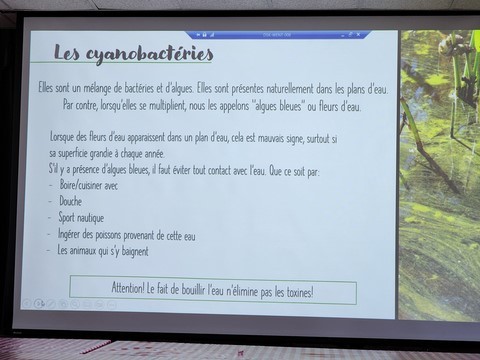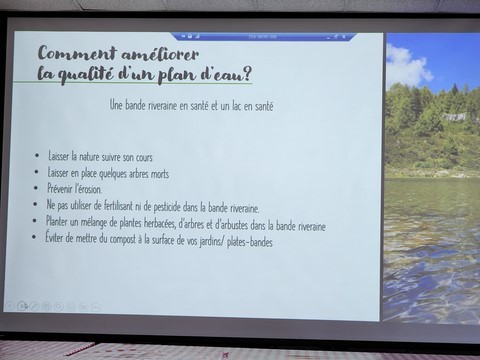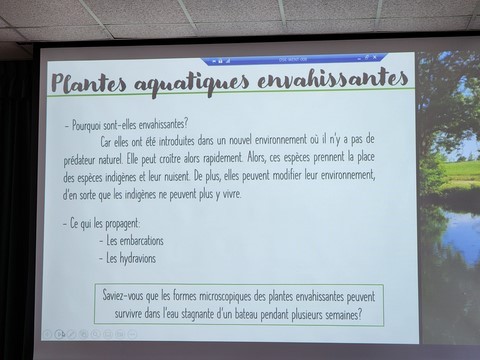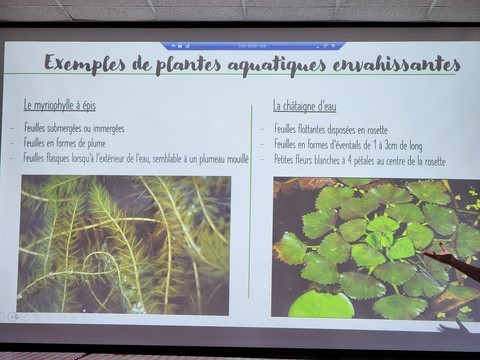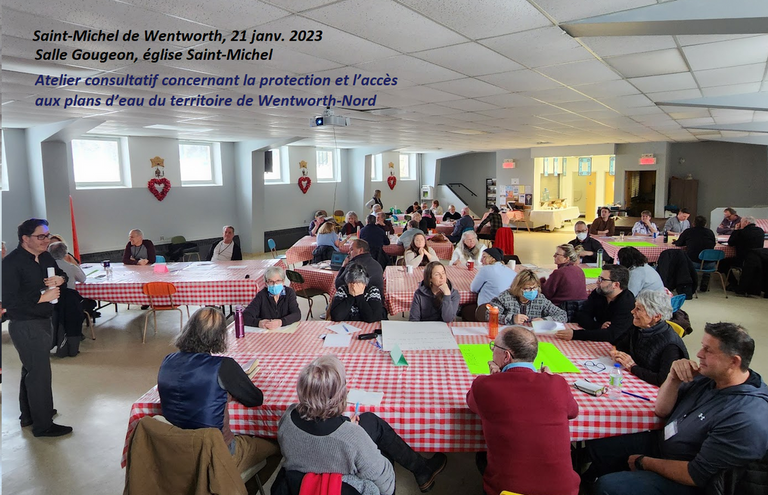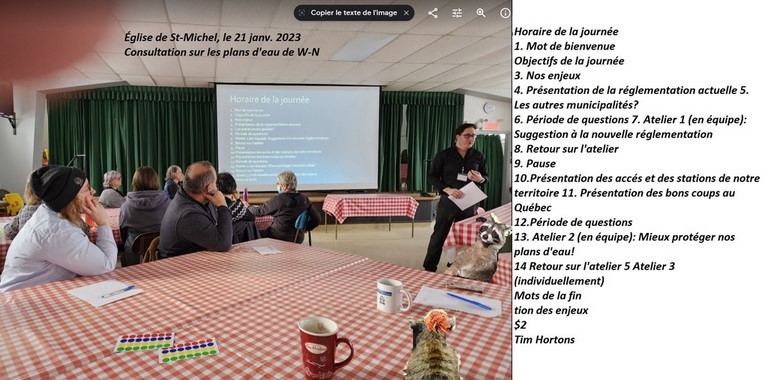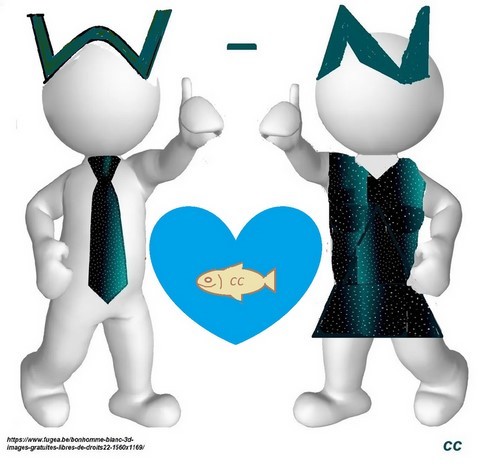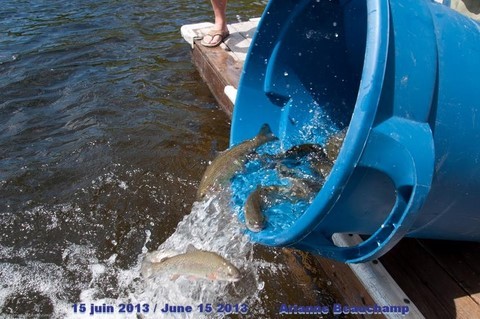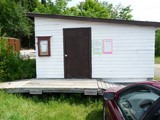The Association
- Meeting municipality of W-N - lake associations, of Nov. 11, 2023
- Meeting of lake associations of May 28, 2023 (Report)
- Word from the ALSFX President
- Consultation on the Protection and Access to Wentworth-Nord’s Lakes
- Exchanges On The Environment Of Water Bodies (suggestions)
- Consultation on the lakes of Wentworth-Nord
- Lake St. Francois-Xavier Association Annual General Meeting, July 23, 2022
- Appointment of Mr. Dean Barrière to the Executive of the ALSFX
- Lake St. Francois-Xavier Management Plan
- News from the Association
- Survey by the Association du lac Saint- François-Xavier
- 2015-2020 in review
- Annual General Meeting of ALSFX 2019
- AGM of the Lake St. François Xavier Association; notes of report
- Notes of report on the ALSFX’s AGM (preliminary)
- ALSFX’s AGM
- The results of the vote
- AGM 2015: The President’s Opening Remarks
- Candidate to the Executive of the ALSFX?
- 2014 AGM; president's opening remarks
- Chart of the LSFX Association
- AGM 2013, Portfolio Wrap up
- 2013 AGM; president's opening remarks
- A Vision for Lake St. Francois Xavier
- Trading
- Lake St. Francois Xavier's Association's executive
Train à vapeur
Meeting municipality of W-N - lake associations, of Nov. 11, 2023
Mr. Plourde recognized several people who had already become regulars at these meetings.
- Boat washing. The coordinator announced that the new washing station is now in place in St-Michel. Montfort will not be left behind. The equipment has already been ordered and installation is scheduled for the end of May. Boat cleaning will cost $20 for non-motorized and will be free for residents. This automated equipment will issue a confirmation without which offenders will be liable to a $1,000 fine.
- Production of new permanent stickers. Their main feature is the inscription of the name of the lake, in addition to the exclusive sticker number. The different colors will make it easier to identify a boat visiting another lake. The old vignettes will still be valid, and it will not be necessary to fill out a new application form to obtain the new ones.Associations must distribute these stickers and update the lists. The municipality would give them the choice of replacing the old ones, which would then no longer be valid. The best thing to do is to wait for your association's instructions. For new boats, this will always be done via a request to the municipality, and not by the associations.
- Production of a pair of large posters indicating the obligation to wash boats and the appropriate rates. The superb, highly visible posters will be installed at the various lakes in the spring.Checking compliance with regulations? Municipal inspectors are empowered to perform this function.
- Municipal water quality sampling campaign. At the May 28, 2023, meeting, we understood that the subsidy covering half the cost of analyses ordered under the RSVL program would be eliminated in favor of this intramural formula. This sampling campaign is therefore in addition to those orchestrated as part of the RSVL program, for those lakes that do participate.It comprises three samplings over the course of the season, at "16 sites downstream of the main lakes". These samplings take place on the same three days (in collaboration with?), to ensure similar weather conditions. Three variables were selected: coliforms, phosphorus, and chlorophyll a.By repeating this campaign on an annual basis, we'll be able to build up a history that will enable us, as we should, to assess the evolution of water quality in these lakes. 2023 will have been year 1.The histogram panel, which uses the average of the three 2023 samples, shows a comparison of results for each lake, for each variable.Our comment: Isn't the very high phosphorus level downstream of Lake Saint-François-Xavier, compared with the average for the other lakes, due to the very poor condition of the small "Pavillon" basin, located precisely downstream of the lake, and whose problem Mr. Bernard will present later? In fact, Lake Chevreuils, which inherits this phosphorus, may be significantly more affected than Lake Saint-François-Xavier as a whole. Our Wentworth-Nord Lakes RSVL & Morphometry’s map showed more average phosphorus levels for this lake. Mr. David Clark, in his "Water Quality tests Results: 1970 to 2020 Analysis", noted a high level of phosphorus in the lake, according to the Carlson index.
- Invasive aquatic plants. We have begun an inventory of invasive aquatic plants in the municipality's lakes with a test project at Farmer Lake. For this inventory, we need the cooperation of lake associations. The lake is divided into sectors to help locate these plants and estimate their quantity. (...) (For equipment, see plate.)
- Shoreline inventory using a drone.
- Project in progress: Photography to verify the presence of vegetation, constructions, etc., on the riparian strip of properties? To ensure confidentiality, the drone will fly at a height of 200 feet, and the date chosen will aim to avoid periods when people are out and about on their docks. –
- Letter to be distributed to members (content?).
- If it doesn't snow any more, all lakes will be visited within two weeks: A race against time begins.
- Georgian snail: Introduction of this snail, defined as an invasive species, to Lake Louisa. Little information available. Residents are asked to add it to the list of species to watch for and report its possible presence.
Mr. Patrice Bernard, one of the directors of the Lake Saint-François-Xavier’s Environmental Fund, accompanied by the Fund's president, Ms. Souzi Mhanna, shared their experience as part of an ad hoc group working to find a solution to control the rapid spread of this invasive native plant.
He presents the lake's physiognomy, with its three basins, including the tiny "Pavilion basin". The latter is particularly affected by the sand, gravel and de-icing salts used in winter on the big hill, which accumulate downstream of the canal leading to this basin, under the Montfort bridge, where the current is reduced. The Fund is currently working with the municipality to have the sediment dredged from under the bridge, as was done in 2015. (Didn't the 2015 attempt fail?)
The plant, which reproduces via its seeds, its root network (rhizomes) or by the detachment of stem fragments (cuttings), also benefits from the very shallow depth of this basin, its high phosphorus concentration, and the passage, through the areas where this plant proliferates, of the many paddleboard/kayak/canoe or other enthusiasts who enter the lake at the Montfort pavilion. If these boats contribute to the spread of these plants, the most damaging are the boats, as they break many of these plants into fragments, contributing to further propagation.
One biologist hypothesized that the plant was transported by boats from the Newaygo marina, and that, as the current moved, it found the ideal place to grow, here and there and most abundantly in the small basin. Avoiding crossing the clusters is applied throughout the lake, not just in the basin.
The group of shoreline residents, concerned or affected by the presence of this invasion, therefore used, and perfected the tarping method chosen to combat the spread of Eurasian water milfoil found in other lakes. In autumn (or spring in this case), once the rest of the plant has died, the rhizomes are covered with a geotextile fabric (e.g. Aquascreen). This will prevent the plant from growing. In this case, the cloths must be removed in the autumn and cleaned thoroughly, so that they can be used next spring. The group has also acquired the equipment needed to make them and place them at the bottom of the water. Once the rhizomes have been neutralized, the canvas can be moved to cover another affected area.
At the Fund, the plan is to create a weed-free corridor at the bottom of the basin, above which, thanks to markers, users could pass in their various boats. A permit from the Ministry of the Environment will be required, however, before the first initiative can be implemented on this scale. A follow-up would ensure the success of the whole operation.
Mr. Plourde will be inviting participants to share their experiences of the lake environment, and to be on the lookout for invasive species. One of the Power Point slides outlines the main consequences of invasive plants on lakes.
Warning against the multiplication of mining claims.
Ms. Brigitte Thomas, of the QLAIM Coalition, warns the lake associations of Wentworth-Nord about the proliferation of mining claims in populated areas of Quebec, and the supremacy of the rights of claim holders over those of landowners. As a result, your land can be explored via a mining claim without your permission. In Gatineau, "722 homeowners were stunned to discover that 85 mining claims encroached on their homes". In fact, mining companies can carry out drilling operations without an environmental assessment.
The MRCs, with their six-month moratoria, are having trouble getting protected areas designated, and there are only three in the MRC des Pays-d'en-Haut. More than 140 lake associations in Quebec are now part of the Coalition, and we invite those in Wentworth-Nord to join them. We don't want mines around our lakes, and we demand environmental studies before any exploration. Wentworth-Nord has already declared itself "Incompatible with mining activity".
Councillor Horan will take up Ms. Brigitte Thomas's message in English and make its content very clear.
- Statistics on problem septic systems
- Your expectations for 2024...
Our comments
As under Mayor Genest's administration, these meetings of lake associations are first and foremost a presentation of the actions of the Environmental Services Department, providing us with valuable information on the measures taken by the municipality to protect its lakes. Adding a presentation on the dispersal of large-leaf pondweed in Lake Saint-François-Xavier and one on the threat of mining claims seemed to us to be an excellent initiative. All this information should certainly be of interest to all Wentworth-Nord residents.
These meetings also confirm the willingness of the current municipal council to make judicious use of lake associations as interlocutors and partners in its environmental protection program. And if the council goes ahead with this policy of citizen participation, why shouldn't residents' committees, independent like the lake associations or at least consultative, necessarily representative of their municipal district or other territorial unit, play a similar role and generate real citizen involvement in Wentworth-Nord?
Translated with www.DeepL.com/Translator (free version) & Linguee
Meeting of lake associations of May 28, 2023 (Report)
The presentation by the Environmental Coordinator, like that of the agent, seemed excellent, while the Power Point would prove most instructive. The clarifications Mr. Plourde added to the statements in his tables and the answers to questions were quite detailed. But all this information shouldn't be reserved for guest lake association administrators and their members. There are too many boat owners who are not members, or who are unaware of the regulations.
We couldn’t fully follow all the information and questions communicated verbally, but we'll take the liberty of indicating those we did perceive. The main point was the content of the tables presented.
In his introduction, the coordinator reported on the results of a questionnaire sent out to the municipality's lake associations. There was a ranking of priorities, as perceived by the latter: septic installations, boat washing, control of the riparian zone, exchanges with the municipality, etc.
The associations were also asked to give their opinions on various projects that could be included in the environmental services program: Takeover of septic system management, use of a drone (already ordered), etc.
The municipality was expected to provide leadership, improve enforcement of boat-washing regulations, etc. Mr. Plourde assured us that municipal services would respond to these requests.
The purchase of super mechanized washing stations and their use were the subject of several news items. At the last municipal meeting, we learned that the equipment of the current stations no longer complied with the new regulations: inadequate water pressure, etc. We understand that they will issue temporary stickers authorizing admission to the chosen lake, and that, for a fee, they will operate on a timed basis. These fees would be different for residents and visitors. Appropriate support would be provided for the boats. A surveillance camera would enable remote control. The first would be installed in Montfort or Saint-Michel. Signage would be very conspicuous but might need to be analyzed on a case-by-case basis.
Just as many details would be offered concerning the use of new stickers on boats. These stickers would identify the lake to which the boat was attached, and so on.
There was also some confusion about the heavy fines to be imposed on offenders, as the regulations adopted were not up to date on this point, Mr. Plourde might have said.
We didn't fully understand the municipal plan to sample lake water. The subsidy covering half the cost of analyses ordered under the RSVL program would be abolished in favor of this new option. (To be clarified)
A number of questions were raised on points that had not been covered in the presentation: the presence of deer near the habitat on the Laurel side; the lack of personnel at Bionest to ensure regulatory follow-up; fireworks, which, among other things, can pollute the lake and the atmosphere; and so on.
As Mr. Plourde spoke of the need to establish an intervention plan in the event of an environmental or other emergency on a lake, the president of the Association du lac Saint-François-Xavier, Mr. Raymond Noël, indicated that he had submitted the plan commissioned by his association to the municipal authorities.
At the end of the meeting, a call went out for volunteers to form the Trails - Outdoors Committee, which should include two representatives from each sector of the municipality.
Councillor Chapados also asked the association representatives if they were organizing clean-up operations.
Word from the ALSFX President
In his April 27 message to members of the Lake St. Francois-Xavier Association and neighbors, President Raymond Noël reminds us, among other things, that we should ask Mr. Stephen Yeats for the key to the boat launch chain at least one day in advance to ensure that it is available.
The President also informed us that " As part of our liaison with the municipality, one of our Lake Association executive (Dean Barriere) has been asked to join a consultative committee to help the municipality with its negotiations with the MRC regarding the Pavilion. "
Finally, the President recalled the Association's follow-up on a few ongoing issues concerning the lake: " There were several serious complaints about the condition of the roads in the municipality and the impact run-off from these roads could have on the quality of the lake (i.e., salt and sand used on the roads during the winter that will wash into the lake thereby causing increased pollution)
We are currently reviewing, with the help of a professional biologist, the data collected last year as part of the water-testing program. The water testing program will continue this summer and we need as many volunteers as we can rope in."
In other news, Mr. Noël also highlights the action of a resident who, faced with the impasse concerning the winter maintenance of a section of Chemin-de-Fer Street, found himself doing this work at the wheel of a tractor. The undersigned has indeed learned that, last Saturday, a couple, walking their daughter's dog, came across him on this section of the Aerobic Corridor " grating the road to fill the holes and smooth out the corridor. He did this on his own time and initiative, knowing that rain was on the way and the road would worsen. “
Translated with www.DeepL.com/Translator (free version)
By Carl Chapdelaine
Consultation on the Protection and Access to Wentworth-Nord’s Lakes
Well prepared and presented by the Municipality's Environmental Coordinator, Mr. Benjamin Plourde, with the help of his team and the Comité consultatif en environnement (CCE), this consultation session on the by-laws concerning the protection and access to Wentworth-Nord's water bodies was held in the Gougeon Room of the Saint-Michel Church. It was initially intended for lake associations but was extended to any interested citizen. More than fifty people were in the room.
(Not having, beforehand, well understood the precise object of the consultation and not having any knowledge of an agenda, the undersigned did not expect to see the participants, distributed in six workshops, invited to give their opinions on a few very precise, but very topical points, submitted to their group. Their reflection was going to feed the municipality in the revision of Regulation 2018-526, adopted on April 10, 2018, we understand. The choice of topics, Plourde told us, stemmed from concerns expressed by the lake associations themselves, at an initial meeting in the fall of 2022).
Two workshops were to determine whether to charge for the wash service; to increase the charge to visitors; and to issue free permits to residents keeping their boats on one lake. Equally difficult was the determination of the fines to be imposed, among others, on owners who are required to see to the respect of the regulations when the launching of boats can take place on their property (the case of the lessors). But how to organize the application of the regulations and the delivery of the tickets?
Two other workshops were invited to decide on four conditions to be attached to the washing certificates: Applicable to all boats? Indefinite? Anytime (accessible at all times)? Unsupervised? The focus here was on how to handle the boats, combining inspection and washing. But it was also felt that the most radical options might be the most difficult to implement.
Finally, two workshops were held to assess whether water access permits should be restricted to residents only; whether they should be required to be renewed on a regular basis. What was the best visual method to identify boats in good standing? And so on.
After a plenary session where the teams reported their findings, a second round of workshops aimed at collecting innovative proposals for improving washing; for better controlling access to water; or any other innovative proposal for the protection of watercourses.
Many of the topics already discussed were examined in these latter aspects. Ideas included automated wash stations, more stations, surveillance cameras, information kits, more noticeable signage, human presence, by constable or volunteer brigade, as seen at Montfort Beach in 2022. We imagined information platforms, awareness measures. Should only equipment rental be allowed on site, and no visitor boats at all? Residents themselves could receive guidelines or an overview of the regulations with their tax bills. A brave participant suggested that more public access to the lakes should be provided, to allow residents who are deprived of them, fishermen and others to enjoy a wealth that does not belong only to shoreline owners...
(The hoped for exchange of ideas among residents on the many environmental issues they face in relation to water bodies; the attention the municipality would give to their concerns as well as their projects, would certainly be for future consultation. However, such inputs may not be put on the table until the 2023 Environmental Services program is developed).
*In a previous article, we already regretted the choice of the place/time for this session. Asking some of the residents involved, including Montreal vacationers, to travel in winter, with the possibility of bad weather and early darkness, and to take a winding road that day, with imposing hills and partially snow-covered, conditions to which they are not all accustomed, seemed to us to be a risky bet. It was certainly commendable to make room in Saint-Michel for the holding of a municipal assembly, as it would be for Montfort. It was also justifiable to consult before developing the programming for this service. However, a meeting at the Laurel Community Center, where it is easy to reach all interested parties by videoconference, would have seemed more appropriate at this time.
Translated with www.DeepL.com/Translator (free version) & Linguee
Les prochaines étapes
Dépôt d'un projet de règlement
Adoption de la nouvelle réglementation
Procédure d'adoption.
CSN
Suggestion à la nouvelle règlementation
1. Mot de bienvenue
Objectifs de la journée
3. Nos enjeux
4. Présentation de la réglementation actuelle
5. Les autres municipalités?
6. Période de questions
7. Atelier 1 (en équipe): Suggestion à la nouvelle réglementation
8. Retour sur l'atelier
9. Pause
10.Présentation des accès et des stations de notre territoire
11. Présentation des bons coups au Québec
12.Période de questions
13. Atelier 2 (en équipe): Mieux protéger nos plans d'eau!
14 Retour sur l'atelier 5 Atelier 3 (individuellement)
Mots de la fin
• Un grand territoire
• Plus d'une centaine de cours d'eau
• Des visiteurs éphémères
• Une capacité limitée en ressources humaines
Vous devez proposer des solutions innovantes :
• Pour améliorer le lavage des embarcations
• Pour améliorer le contrôle des accès au cours d'eau
• Suggestion à la nouvelle réglementation
• Autres propositions innovantes pour la protection des cours d'eaux
Les accès privés connus (Ces accès sont donnés à titre Informatifs) :
• Camping du Grand lac Noir
• Rue des Jacinthe, Lac la rivière
• Chemin Millette, Lac Argenté
• Rue Coton, Lac Louisa
• Chemin Lobel, Lac Wentworth
• Chemin du Lac Farmer, Lac Farmer
• Chemin des Mésanges, Lac spectacles
• Chemin de fer, Lac St-François-Xavier
Les propriétaires ont leurs propres règles et manières de procéder pour les autorisations d'accès à leur propriété.
Les autres villes?
Tout utilisateur doit, avant la mise à l'eau d'une embarcation non motorisée, en retirer tout organisme (animal ou végétal) qui pourrait se trouver sur la coque, la remorque ou tout autre équipement relié à l’embarcation non motorisée. Il doit aussi s’assurer de vidanger les contenants pouvant contenir de l’eau d'un autre plan d'eau avant la mise à l'eau de l'embarcation non motorisée.
Tout utilisateur d'une embarcation motorisée (combustion ou électrique) doit se munir d'un certificat de lavage (vignette) reconnu par la Ville.
De plus, la remorque doit également faire l'objet de la même procédure préalablement à la mise à l'eau et à la sortie d'une embarcation de l'eau.
--------------------------------------------------------
Notre réglementation
Article 20
Pour la mise à l'eau d'une embarcation hors des heures d'ouverture d'un poste de lavage reconnu par le conseil municipal, tout utilisateur doit
1) Inscrire les informations suivantes dans le registre de lavage des embarcations au poste de lavage
a. Ses noms, prénom et ville de résidence; b. La description de son embarcation, en spécifiant moteur et le cas échéant sa dimension, son numéro de série, y compris celui du moteur et, le cas échéant d'immatriculation et/ou celui de son véhicule et de sa remorque.
2) Laver son embarcation, le moteur, la remorque, ainsi que tous ses accessoires, s’il y a lieu, au poste de lavage établi au tableau de l’Annexe A
---------------------------------------------------------
Cibler des zones où il y a possibilité de nouveaux aménagements d'accès publique aux cours d'eau.
Exchanges On The Environment Of Water Bodies (suggestions)
- Produce and distribute a pamphlet on best practices and watercourse regulations in Wentworth-Nord; or, alternatively, use existing provincial or national pamphlets. The Grothé Lake Association had prepared a pamphlet entitled: "Grothé Lake: a jewel to protect". Mr. David Clark had already suggested that the municipality produce a kit on the main regulations to be respected. At a meeting of lake associations on Oct. 18, 2014, the Association des résident(e)s du lac Spectacles presented a small welcome binder, at $20, which was distributed to establishments renting rooms or other hospitality facilities.
- Production, by the municipality, of a model pamphlet, in the form of a lake map, to be distributed to friends, fishermen, kayakers, windsurfers visiting the lakes.
- Associations do not have all the resources to really monitor lake health; they need help from the municipality.
- Evaluation of the trend in the evolution of lake health of the lakes of Wentworth-Nord: improvement or deterioration? -> Importance of actions to be taken. What do you think is the level of eutrophication in your lake? But the RSVL does not seem to take into account sedimentation, and we have little idea of the situation in the lakes of Wentworth-Nord.
- Suggested techniques for assessing sedimentation and siltation rates in Wentworth-Nord lakes. -> Corrections to be made.
- Better evaluate the impact of lakeside developments in terms of sediment input (standardized access roads, ditches, culverts, private parking lots, roads, abrasive application, etc.) and adapt the standards to the reality on the ground.
- Call on the municipality to look into the possibility of restoring the ecosystem of the lakes (case of dredging sediments to recreate trout spawning grounds, etc.; experiment stopped in the channel under the Montfort bridge. See the possibility of equipping the outlets of our dam lakes with bottom gates to naturally evacuate sediments; and with ladders for trout upstream).
- As already initiated by a lake association in the past, all lake residents could be encouraged to take water samples in front of their property, all at the same time. Such a coordinated operation would provide valuable information on the quality of the lake water and possibly its evolution. It would also allow for comparisons between lakes in this regard and for lessons to be learned. Any other such initiatives, approaches, tools, etc., taken by one of the Wentworth-Nord lake associations could be shared with the others for the benefit of all.
- Mr. David Clark had previously asked if his association could obtain assistance from the municipality to validate its choice of water quality testing tools and to synthesize the historical data that had been accumulated. His request was well received; however, there was a need to monopolize other associations to justify providing a budget to set up such a municipality-wide service. CRE would eventually provide the expertise if a request was subsequently made by the municipality and accepted.
- Raising awareness on the role of interventions in the watershed of a lake on the balance of the latter. E.g.: How can the development of Lac à la Croix, at the head of Lake Saint-François-Xavier, affect the latter? Is each lake association in the same watershed connected to the others and do they share their objectives? The grouping of lake associations in the same watershed, as exists elsewhere, can allow a better approach to protecting their environment, facilitate obtaining a budget to try to solve a common problem, etc. Neighboring municipalities can be involved.
- What is the condition of the septic systems on a lake and what are the most appropriate measures, based on regulations and the reality on the ground and at the owners?
- Systematic emptying of septic systems by the municipality: The former administration had announced the implementation of such a program; nothing followed this announcement. Probably not feasible...
- How effective are protective measures such as boat washing and lake access control? What are the measures suggested by the associations?
- An SQ patroller, invited by the municipality, had already pointed out that, in addition to unclear regulations and the existence of various levels of jurisdiction, there were gaps in the signage present or not on the lakes (signaling obstacles, submerged rocks, etc.). Could the municipality look into this?
- The SQ officer had also pointed out that activities on or around the lakes can sometimes be disturbing, dangerous, prohibited, etc., e.g., fireworks or other events; boating at night (the timing of which is difficult to determine). The SQ can sometimes intervene if there is a complaint and if it is under its jurisdiction. Shouldn't the residents be better informed of the rules and of a code of conduct to respect?
- Lake associations need to focus on informing all citizens.
By Carl Chapdelaine
Consultation on the lakes of Wentworth-Nord
This consultation session on the Wentworth-Nord Water Protection and Access Regulations will be held in St. Michael on Saturday, January 21. It is aimed at lake associations. But, is it wise to hold such a consultation when more than half of the residents around the lakes are not present? If this proportion reflects that of the members who make up the boards of directors of these associations, we may be depriving ourselves of valuable exchanges.
On the other hand, wouldn't addressing only the lake associations limit the scope of the exercise even more? In Montfort, some people question the representativeness and the positions taken by the ALSFX, which rejects boat control, opposes the reinstallation of navigation buoys (limiting the speed of boats to 10 km/h, within 30 m of the shore), etc. Having left the said association, they feel excluded from this consultation.
Of course, preparing the programming to be put in place for the next summer season is a good idea, but shouldn't it have been accompanied by a call to all, by way of videoconference, or by a plenary session upon the return of vacationers?
By Carl Chapdelaine
Lake St. Francois-Xavier Association Annual General Meeting, July 23, 2022
This report is not the responsibility of the Lake St. Francois-Xavier Association and is not the minutes of the meeting. (We have not been able to record and render all the content of the interventions. Any corrections or suggestions will be considered).
Except for Mr. Adam Gibb, the outgoing and reappointed members, Raymond Noël, Souzi Mhanna, Russell Watson, Susan Welsh, Sheila Yeats and Stephen Yeats were present.* Mr. Dean Barrière, the new member joined them. The President, Mr. Raymond Noël presided over the meeting, in both languages. There will be about 40 people in the room, in addition to the members of the Executive.
*Mrs. Welsh no longer resides in District 5 of Wentworth-Nord and cannot, according to the constitution we knew of the ALSFX, be a member or sit on the Executive of the Association. But the president made no mention of this.
Ms. Souzi Mhanna is also the new president of the Lake St. Francois-Xavier’s Environmental Fund.
Word from the President:
Greetings to the newcomers.
Looking for volunteers, with some expertise in lake health.
Presentation as short as possible, to allow for questions.
Welcome of Mr. Dean Barrière to the Executive and thanks to those who left over the past year.
Mr. Noël will also indicate that he had run as a candidate in the municipal elections and had left his position. However, he was reinstated on the Board and as President of the Association. He congratulated his opponent, elected Councillor Colleen Horan, who was present in the room (the mayor was not invited and did not attend).
Introduction by the two new members since last year:
Mr. Barrière mentioned that he had some experience with associations.
Activity report
Communications with the new municipal administration.
Survey of lake residents (as per list available at the Association).
Water testing in 2021 (report already published).
Lake Stewardship Plan (report already published). A professional report, based on the expertise of the biologist. The Association is very proud of it.
A step-by-step contingency plan against the introduction and spread of invasive plant species (Eurasian watermilfoil), the draft of which was approved by the biologist, including:
o "A formal program to keep the species out of the lake (i.e., preventative measures).
o An education and outreach program to ensure that as many residents as possible are aware of the problem and can identify the species.
o A vigilance program where there are regular "inspections" of the lake to identify the species as soon as possible after its arrival.
o Identify and put in place the resources necessary to identify and formally confirm its presence and mobilize resources to contain and control it.
o Assessing the extent and location of the introduction and spread and determining the best corrective actions to take.
o Implementation of appropriate corrective actions."
Report on lake use (including stocking status).
Buoy installation. Difficult subject. They belong to the municipality. The Association was installing half of them, to facilitate the installation. (The municipality does not have a boat available here.) We were covered by the municipality's insurance). In 2019, the agreement was between the municipality and three individuals.
Other issues as they arise and are identified by the board.
Action Plan for 2022
Invasive species monitoring training session.
Water safety.
Concern about pollution possibly created by poor wastewater treatment facilities.
Etc. (Some parts of the presentation missed by the undersigned).
Long discussion here on the Association's Fish Stocking Fund ($10 of the $35 membership fee).
o Stocking or no operation has no influence on the ecosystem, according to the biologist.
o ?
o You would have to release 3,000 to 4,000 large fish per year to have a positive impact on the ecosystem.
o The $2,800 in the fund would only buy 700 of these fish for a single year. Several years of contributions would be required for one year of stocking. Such a program is unsustainable.
Financial Report (Susan Welsh)
(We did not have the presence of mind to take a copy of the financial report...)
Our membership was low last year. Our membership dues are our only source of funding. We need to increase our membership.
We were hoping to get a refund from the Environmental Fund for ...
It had been indicated that the municipality would reimburse 100% of the cost of water testing under the RSVL program. But it seems that council is undecided on the issue.
Councillor Colleen Horan says the issue is on the table at council. It is a measure that would apply to all lakes.
o The Treasurer indicated that the Association has an expert to speak with the municipality or any other stakeholder.
o ...
R. Noel: We cannot budget without knowing how much money we will get back for our costs with the RSVL and what we need to do with the stocking fund.
Fish Stocking Fund
(Here the president invites the members to express their opinion)
R. N.: Possibility of cancelling this program and putting the reserve and dues into the overall assets.
Stakeholder: It was a memorial fund (Andrew Schell originally).
''' and Dean Barriere: Postpone the decision until next year? R. N: We've been doing just that for a few years.
D. Clark: What kind of lake do we want? Fish are part of its ecology. Stephen Yeats: It's $4 a fish! D. C.: It's a choice between ecology and expense. R. N. : Biologist says it doesn't affect the ecology of the lake.
Stakeholder: The Schells would agree that the Fund should be dissolved.
''': Stocking is not a priority.
The undersigned:
o Does the cost mentioned for successful sustainable stocking take into account the lack of a fish barrier at the outlet of the lake? R. N.: The large trout in question would be able to pass through the barriers and return to spawn in the lake.
o Couldn't the money in this fund be borrowed for other uses until a decision is made on its future? (The suggestion was not well interpreted, although Yves Léveillé indicated that this was commonly done).
C. Horan (in response to a commenter who had to suggest going to the government) : Edna did warn us that the lake would be listed as a fishing spot in the Quebec directory if we appealed to it).
Stakeholder : Form a committee to raise funds?
R. Noël :
o The decision will be deferred for one year.
o Vote to remove the $10 fee (cancelled).
o Vote to keep it at $35, but not to put it into the fish stocking fund. (We believe this proposal was adopted).
Question period
(Inaudible) on access to the boat ramp (the chain).
One of the docks on the marina side needs to be repaired. R.N.:
o It is on MRC land.
o I have asked the municipality to repair it. C. Horan: It does not belong to the municipality.
R. Noël: The pins at the edge of the wall of the marina are dangerous and it needs repairs.
Mr. Robert Théorêt, noting that everything has increased, proposes to increase the membership fee to $50. Russell Watson: We will lose members.
Without prejudice, by Carl Chapdelaine,
Appointment of Mr. Dean Barrière to the Executive of the ALSFX
On July 15, 2022, the President of the Lake St. Francois-Xavier Association, Mr. Raymond Noël, announced that, in accordance with the by-laws of the Association, Mr. Dean Barrière was nominated by acclamation to the only vacant position on the Executive. He was the only one to submit a nomination before midnight on July 14, 2022. C.C.
Lake St. Francois-Xavier Management Plan
In a May 5 news letter to members and neighbors, Saint-François-Xavier Lake Association's president, Mr. Raymond Noël, mentions, among other things, that: "We have had a meeting with a professional biologist to prepare a Lake Stewardship Plan. The work contained in the plan is expected to take up most of the efforts of the Lake Executive and as many residents/volunteers as we can encourage to participate. A high-level summary of where we are at this time is elsewhere on this website.” https://lacsaintfrancoisxavier.com/
News from the Association
In an email to members and neighbors, President Raymond Noël reminded everyone that the results of the Association's survey of lake residents will be the starting point for the work of the Association's executive for 2022.
He mentioned that a first meeting with the Municipality on February 17 was very productive and that the new municipal administration and the Association will cooperate on the health of the lake and the preparation of an emergency plan in case the lake is infested with invasive plants.
The municipality has also advised them that it will be taking back possession of the buoys and that it intends to reinstall them on the lake.
Mr. Noël highlighted the success of the winter golf game organized by Richard Morris at the lake on March 5.
As a final point, he announced that for personal reasons Stephen Yeats has resigned as Vice President of the Association, effective March 7, 2022; that he will remain on the Executive which has acclaimed Adam Gibb as his replacement.
By Carl Chapdelaine
Translated with www.DeepL.com/Translator (free version)
Survey by the Association du lac Saint- François-Xavier
On February 7, the executive of the Association unveiled the results of a survey it had prepared for, it explains, all the lake residents it had been able to reach by e-mail. Of 120 mailings, 60 would have generated a response to the survey. The executive asked for their <opinion> on the issues that (their) association should focus on.> The survey listed a series of such issues.
The redundant inclusion of some responsibilities already in the Association's mandate, <such as water testing, boat washing, collaboration with RSVL, etc.>, was omitted.
The results are grouped into three levels of approval on the importance of each issue to the residents surveyed:
1. <The large majority of you (85% or more) agreed that the (items) were important.
2. About half to two thirds of you felt that (the items) were of concern.
3. Very few of you (25% or less) thought that (the items) were important.>
In conclusion, the survey would have indicated that: < About two thirds of the respondents (38 to 42) placed “contingency plan for invasive species” and “priority for residents to use the lake” as either first or second priority>.
The analysis of the results can be seen by following the link: Survey summary report.
Comment: the fact that only 25% of the residents consulted would have placed the issue of <Increase the number of buoys on the lake> as a priority leaves us wondering and a bit skeptical about their impartiality. And we know of well-known residents of the Lake, Mrs. Denyse Pinsonneault and Mr. David Clark, that didn’t receive it…*
The reinstatement of all buoys seems essential to the enforcement of the regulations on the control of navigation on the lake and for the safety of all its users. The former administrations of the Association had obtained this after a decade of arduous negotiations with Transport Canada.
This question will probably be the subject of a future demand by the Municipality to the said Association. As we know, the latter is against the reinstallation of these buoys and is counting on the support of its members (and residents) to oppose it. If only 25% of the residents consider this issue important, shouldn't the Association respect its mission and consider an awareness campaign on its importance for the protection of the lake and its users?
*Jan. 13: The executive of the Association denounces and contradicts our statements, while claiming to have sent the questionnaire to these two residents, but they did not receive it. We can believe that a technical problem caused this state of affairs.
By Carl Chapdelaine
Translated with www.DeepL.com/Translator (free version)
Annual General Meeting of ALSFX 2019
Fish restocking Fund (Stephen Yeats and others): $ 2,350 in reserve to the Fund and discussions on the future of this program. There would not be many fishermen. (But there were several fishing enthusiasts on the private wharves this weekend in Newaygo.) Need of a fish barrier at the lake exit before resuming restocking. Suggestion from someone to release larger trout; they would cost more but would not leave the Lake, according to him. The vote maintains the $ 10 contribution while waiting to decide on the future of the operation. (There will also be mention of the $ 5 for environmental expenses in the budget.)
Lake Health (Jim Clark): No invasive alien plants from last year's inventory, with boats, aquascopes and volunteers. The water is good; results on the ALSFX site (not found ...). (And what about the analysis using the VLMP Protocol?) Mathieu Madison was the resource person for future advice and action.
Buoys (Raymond Noël): "It's the responsibility of the municipality; ask them any questions." (Period.)
Financial Report (Susan Welsh): See the attached budget.
Question period:
1. A fee for washing boats? Rep. Mr. David Zgodzinski: No; some will prefer to sneak rather than pay even $ 5. And the voluntary contribution already represents too much administration for what it brings back. Other ways are to be looked at to share costs with tourists.
2. We would like the Association to provide us with information about what is going on in the municipality. DZ I am here to answer your questions; and easy to join. Come to the City Council meeting. RN This is not a topic specific to the AGM. Time has been given to the mayor to answer questions in the past, and this has diverted attention away from our own affairs, while bringing individuals matters.
For such an assembly, the support by a Power Point, as it might have been the case a few years ago, could perhaps allow all those present to not miss anything. As the number of people in the room can still exceed that of the 75 members indicated in the budget, and the event only happens once a year, a PPP would seem to be justified.
With Google Translate and Linguee
AGM of the Lake St. François Xavier Association; notes of report
The annual general meeting was brilliantly presided over by the president of the Association, Mr. Raymond Noël. He also provided the translation of exchanges when required. We estimate the audience at more than 100 persons.1
Welcome and logistics
1. The president announces that there will be a chore on August 24 (Friday?) to make an inventory of aquatic plants. He invites potential volunteers for this operation to indicate it on the sheet in circulation in the room.
2. He asks people of the audience to put any questions in their own language; he will work to translate them when appropriate. He asks to be brief and book issues for the allotted time, unless there is a request for clarification or procedure on the current topic.
3. Despite the fact that the introduction of a new constitution is an important element of the agenda and calling for a vote, the President announced that, because of the unexpected absence of the key player, Mr. Thomas Morris, this topic will not be treated at this AGM.
4. Mrs. Colleen Horan, who among other things provided the secretariat services for many years for the Association, resigned from her post. One candidate, Mrs. Sheila Yeats, run for the vacancy at the Executive and was elected by acclamation. For want of candidates, its other seven members are re-elected. A recognition plaque, with the logo of the Association, is handed to Mrs. Horan with the thanks of her colleagues and the applause of the Assembly.
Brief report on the activities of the Executive
1. Three (private) buoys have been placed on the Lake in replacement of the small rafts indicating the beginning or end of a speed reduced to 10 km/h zone. One was bought by the Municipality; the Association had to pay for the other two. Navigation buoys have been reinstalled on the Lake late (in July) due to a problem with the used pontoon boat engine.
2. The Executive met with officials of the Viking Canoë & Kayak Club to discuss some problems. The Executive is persuaded that officials at the Club make sure that the procedure of washing of boats under the Club authority be respected meticulously, that its boats have appropriate stickers in accordance with this Regulation. They go even beyond their obligations by advising potential visitors to the Lake of the need to follow this established legal protocol. They will take care to not generate excessive noise during happy hours related to their activities; the exception being the use of the megaphone during their annual regatta.
3. Colleen Horan reminds that a sheet is in circulation in the room to receive the names and contact information for volunteers and preferences of service indication.
4. Mrs. Horan indicates that monitoring and washing of boat (?) services were not available prior to June 23, an unacceptable situation for the ALSFX which had to fill this gap. She follows with a strong plea for the Association’s move to support the resolution of the Municipality on its commitment to take over, for the MRC, the mandate for the service so far, very carelessly she noted, offered by the Coop des 4 Pôles at the Montfort Pavilion as well as for maintenance and (according to the Executive?) surveillance of crafts accessing the Lake from various places. She says loud and clear that the Association (unless it was about the Municipality) received (in a survey by email) a majority support of its members (or the population in the case of the Municipality) in this sense.
Mrs. Horan will give an example to justify this finding of negligence on the part of the Coop that would let unwashed boats getting into the Lake. (No defence on the part of the Coop seems have been reported or requested by the Association or the Municipality in regard of these charges...) (Here, we welcome any corrections or any accuracy that we would have missed.)
Mr. Noël will inform the assistance that some owners have not the regulatory sticker on their boat.
Fish restocking
(Having not received copies of the financial statement where some details on this topic were indicated, it has been difficult to understand the presentation by Mr. Stephen Yeats.)
Have we heard that 1 500 trout had been released into the Lake in three years and that fishermen didn't so far not really caught any? Then the money would be misused. Once, FAPEL would have advised to release fish of 11 inches; but that was not the case. According to internal research, it was found for example that a relatively bigger number of trout had been introduced in some lakes compared to Lake SFX. The fact remains that the operation does not work. Should we install a barrier at the outlet of the Lake and clean the bottom of the streams that flow into it to allow the trout to spawn? One person mentioned that the same discussions took place at Lake Notre-Dame.
We were informed yesterday that Mr. David Clark had questioned the Executive about the lack of restocking in the Lake in 2017. (Without prejudice, because we were not able to hear his words at the AGM.) The budget for 2017-18 shows $ 0 as the amount spent on this item; (even if members had rejected, at the AGM of 2017, a request for the Executive to suspend the restocking for that period, do we understand).
The President indicated that it is the members who will tell the Executive what to do with this activity.
Lake Health
Mr. Jim Clark (?), in charge of this issue, makes the presentation. (We will resume in our own words what we were able to understand from his remarks.)
1. The 'Health of the Lake 101' workshop organized by the Association at the Montfort Pavilion on June 23 brought together many members and residents. Mr. Mathieu Madison, biologist teacher at Rosemont College and president of Abrinord, has provided valuable information on the protection of Lake Saint-François-Xavier, while answering the questions and exchanging with the audience grouped by tables-workshops.
2. The key points identified at the conclusion of the workshops were, among others:
a. The need for efficiency and upgrading of used waters facilities.
b. Prevention of the introduction of any aquatic invasive species.
c. The need to seek for sedimentation reduction (that origin from the riverbank and from the entire watershed) which seriously affects a lake. It is not only of public interventions, but of the measures to be adopted by each owner.
d. Monitoring of programs to evaluate the quality of the water (and the degree of eutrophication of the two basins of the Lake.)
e. Communication and awareness; not to mention the problems of access to the Lake.
3. Next steps
a. Evaluate the choice and effectiveness of follow-up programs on the quality of the water and the status of the Lake.
b. ?
c. Work with the Municipality in the case of treatment or evacuation of waste water, including septic systems facilities.
d. An amount has been allocated for a possible mandate for a working group on the development of an environmental action plan over 5 years for the Lake. (The item "project - environment" budget shows $ 368 for 2017/18 and $ 4,100 for 2018/19.)
Communications
From what we understood from the presentation of Mr. Russell Watson:
The Association is in need of a website to communicate with members (and the public...), to share information quickly and conveniently; particularly on the topics and actions of its program, like the VLMP. The Association receives requests for information and it is necessary to use such means of communication.
We need a workforce.
The website could be shaped on Lake Barron’s one [it would be under construction and functional within two months. (?)]
The Constitution
A draft of a new constitution had been communicated to the members. Several people in the audience had questions on the subject, despite the fact that the president had mentioned that the presentation on this issue would be re scheduled due to the absence of the key player.
Some said that more time should be given to members and more discussions be allowed before adopting a document of such importance.
In front of these observations, Mr. Raymond Noël offered interested parties to send their comments on the submitted version. He added that new versions would be proposed in response to the evaluation of suggestions, and that the discussion planned for this year would be postponed to the next AGM.
Question period related to the activities of the Association
1. Mr. Dave Clark asks if we make sure that, when launching of boats occurs at the beach, the washing procedure is respected. Mrs. Horan tells him that it is very difficult to always monitor what is happening at the beach. Many people are obviously not aware of the danger of introduction of invasive plants in the Lake.
2. On the question of who determines an offence and gives a ticket, the undersigned was answered that it is an employee of the Municipality. (It would be the attendant at the Montfort Pavilion, will we be told by someone else.)
3. On the Constitution, Mr. Dave Clark suggests having a meeting of volunteers to work upon. Mrs. Diana Jegou believes that it should be discussed at a general meeting, perhaps the next AGM. Mr. Jacques St-Laurent also thinks that it would deserve a whole general meeting.The president says that members will be asked what they prefer and propose that the matter be deferred to the agenda of the 2019 AGM. Adopted!
4. About the mentioned research on the issue of the fish restocking, Mr. David Clark asks that the reference to this research be communicated to members. The president said that everything will be available by internet. Mr. Stephen Yeats interprets the meaning of Mr. Mathieu Madison’s words explaining that it is not really here an environmental issue, but rather a social one.
financial statement
Mrs. Susan Welsh made the presentation of its financial statements.
She has reformulated the presentation.
There will be $ 4,500 (?) for the 5-year environmental plan project. The Executive was asked if an appeal to the Lake Saint-François-Xavier Environment Fund had been made for this project. The President replied that it had not yet been made. Councilor and former Treasurer of the Fund, Mr. David Zgodzinski, indicates that the project would fit well with these organization selection criteria.
There is also a sum for the translation of the constitution made by professional services.
General question period
1. Mr. XYZ: Concerning the environmental plan (?), there is a place on the Lake where was identified of the most important environmental problem, but on which we're not leaning, it is at the outlet of Lake Thurs(t)on in the Lake Saint-François-Xavier Newaygo basin. Following the destruction of the beaver dam at the first Lake, the bottom of the Newaygo basin at the head of this bay has been and remains elevated from 2 to 3 feet, so that now full of aquatic plants are even flowering. The ALSFX should ask the Fund to finance a study and a restoration project for the status of this bay. Mr. David Clark pointed out that it will be difficult to clean up this place and that we might refer the problem to Mr. Mathieu Madison. The President of the Environmental Fund states that any request from the Association for an analysis/project in this case or any other will be considered.
2. The undersigned asked the President by what right he had sent, on behalf of its members and unbeknownst to them, a letter of support for the resolution of the Municipality, adopted the previous day, asking the MRC to let it take over the management of the Montfort Pavilion and the maintenance of Orphans’ Trail, among others, from the hands of the Coop des 4 Pôles. How such could be done, by the Municipality or the Lake Association, without allowing a defense to the body referred in front of these charges of negligence? In response, Mr. R. Noël recalled the conclusive results of a survey to members on the matter and his right to act on their behalf. He did not comment on the second question.
3. Mr. David Clark, about ?, reminds that the Executive must be the spokesperson for all and not for a particular group.
4. Mr. R. Noël will indicate that, in the case of the restocking, the Executive had not received directive of the members.
5. The President recalled that the Environmental Fund AGM will take place on 11 August, at 9:30. The Regattas and the community gathering will be held next Saturday, July 28, (at the beach and at the Montfort Pavilion).
(Automatic translation with Google translate following for now.)
Security on the lake
Mr. Raymond Noël points out three points:
1. Swimmers venturing beyond the shoreline on the Lake should be accompanied by a boat as they may not be seen and be hit.
2. Boats and other non-motorized crafts should run along the shoreline and should not risk motorboats endangering them or as well affect their movement.
3. Motorized boats must give priority to those that are not.
4. Inaudible question from Ms. Beauchamp.
5. Mrs. Diana Jegou will report that swimmers leave the beach and go well beyond the belt that delineates it in the Lake, thus putting themselves in danger and forcing the motorized boats to be very careful.
6. According to Mrs. Jegou, the buoys are misplaced in terms of their distance from the banks. Mr. Russel Watson will reply that they had to install them at full speed. Everything should be rectified.
By Carl Chapdelaine
1. We were in first row and often only the translation of the exchanges in the room, most often in English, allowed us to follow the progress. Nevertheless, we could not understand everything; especially since, having announced the non-renewal of our membership, we had not received the financial statements with the overview of the few projects we were going to discuss.
With the use of Google Translate.
Notes of report on the ALSFX’s AGM (preliminary)
President, Mr. Raymond Noël, also chairs the Assembly
Procedure
1. Mr. Noël first recalls the rules for the conduct of the Assembly. Mr. Adrian Hausermann will be contributing to the translation of the interventions in the other language. Then follows the approval of the agenda and of the minutes of the 2016 AGM.
2. It is immediately time to proceed to the election which will reshape the Board of Directors (Executive Committee) of eight members, following the resignation of two of its directors. Members in good standing had received, at the entrance, the ballot with about ten names, either of the six outgoing directors, or of the candidates wanting to access the Committee. (The President will explain us that the Executive Committee and each of its directors are expected to seek a new term every year. But it was common in the past that the confidence of members is granted, by show of hands, and that their mandate is renewed for another year. Vacancies can be filled by acclamation if the number of candidates does not exceed the number of resigning directors. In any other case, the election brings, among administrators out, the three getting less than others faced with the score of the new candidates).
Candidates will be asked to introduce themselves; then we proceed to the vote. Counting will be done behind the scenes, under the supervision of Mr. Jacques Saint-Laurent; results will be announced during the meeting. (Six members out of the Executive will be all re-elected; while among the four new candidates, Mr. Jim Clark (?) and Mr. Morris (?) will also be joining them.)
Activity reports
1. The two small speed sign rafts on the Lake. The president informs us that one of the two has been replaced. The other will be also; but discussion is going on sharing tasks and costs with the Municipality and on the liability involved.
2. Invasive plants. R. Noël takes the words of his July 6 e-mail and lists the actions taken by the Executive Committee on this issue: «We are very concerned about the encroaching Eurasian Milfoil – it is already in several lakes in and near the municipality."
He explains the intention behind the legal consultation about the involvement of the Association in a cooperative agreement with the Municipality concerning the application of the by-law on the protection and access to bodies of water. The Municipality, he says, is committed to two visits per season on the Lake. Furthermore, the control operated by the Coop des 4 Pôles, at the public dock of the Pavilion of Montfort, was to begin on June 24. The ALSFX has therefore formed a team of students to raise awareness of those who put any watercraft in the Lake at the obligation to wash it and to indicate where and how do it. The do-it-your-self boat-wash station of Montfort now being usable at all times.
3. Communications. Mr. Russell Watson talks about the success of the Association’s Facebook page, lined with sending bulk emails to members in addition to information. The proposed creation of a website would imply a very significant expenditure, while the Facebook page and e-mail system seem to be enough. The project was abandoned.
4. Constitution and Newsletter. Outgoing Director, Mrs. Shelagh-Jane Woods worked long on the proposed renewal of the constitution of the Association. The task remains complex and the involvement of all will be required to complete. Also, Mrs. Woods explained that the publication of the Newsletter, twice a year, weighs heavily on the shoulders of those who contribute actively. It is suggested to replace it with the dissemination of news through the Internet. Some members will oppose the disappearance of the Newsletter.
5. Lake protection and follow-up programs. Mrs. Colleen Horan explains how the collection of water samples and the measurement of transparency are done, under the Protocol of the VLMP (RSVL) which she and Mr. Felix Hausermann have ensured operation since many years. The VLMP for 2016 report is not yet available (internal problems to the VLMP). She also reminds the operation for several years with Notreau services, to check the quality of water for swimming at the sites chosen by Dr. Richard Carignan.
She also strives to describe the role of students who monitor access to water, at the Pavilion, the beach and the marina (when?). They do not wash but show how to use the station. They are paid (?), thanks to the Environmental Fund (?) She appealed to all to monitor compliance with the regulations on the Lake, with report on offenders and taking pictures. Photos at the Pavilion
Mrs. Edna Schell wonders why it is not first a responsibility of the MRC. The Chairman invited Mayor Genest to answer this question. Mrs. Schell talks about what is happening elsewhere and ask if such action has been taken. Mr. Noël indicates that the Association has consulted with other organizations.
The Mayor speaks of a sum of $ 5,000 spent by the MRC at the boat wash of Montfort. He explains that, for its part, the Municipality has committed funds for the awareness of residents and visitors to the danger of invasive species and to the new regulations. However, the active participation of organizations for the protection of lakes is essential. He cited the case of the close collaboration between local residents and the Municipality at Laurel Lake (fighting with the milfoil) and count on the ALSFX at Lake Saint-François-Xavier.
6. Historical water quality data. Mr. David Clark was invited to present the work he has done on the historical data about the quality of the water and the state of the Lake. He said having reacted to the finding of a recent and extensive study sponsored by WWF*-Canada on the state of health of the 25 key watersheds of Canada. * World Wide Fund For Nature, an international NPO, formerly named the World Wildlife Fund.
He described the results of his work of compilation and analysis of 46 years of data on the Lake. He indicates that he communicated with several small groups of residents recently, using a Power Point Presentation, and he's ready to do the same for all concerned. These results speak for the Lake and indicate a fluctuation and a degradation of the quality of water based on human action. It must be taken into account and induce action.
He recalled the report of the Réseau Inter-Lacs, 1998, which already showed a eutrophication (aging) of the Lake by, among other things, a lack of oxygen due to the supply of nutrients and the consequent increase of aquatic plants. This problem was particularly notable in the section of Newaygo (become, by its position upstream, a kind of sedimentation basin for the whole of the Lake). He regretted this year missed opportunity with the CRE to develop a Lake Health Master Plan.
7. Financial statements of the Association. Mrs. Susan Welsh, Treasurer, presents the table and issues a few motions.The one, worked out by administrator Jennifer Barnard, to jump a year of trout restocking (?), giving time to assess the still uncertain results of this operation, does not have the consent of the Assembly.
The one to let the membership fee be reduced when dealing with more than a year, attracted some support but was ultimately rejected. Mrs. Edna Schell will trace the origin of the environmental fund in the budget of the ALSFX, whith $ 5 intended initially to the reforestation of the shore (?).
Note: The presentation of the budget sparked with many interventions, questions and votes. It was a little similarly throughout the Assembly, so that there was no more time at the end for the Questions period. But the formula has probably pleased most and kept the interest of the audience.
8. Contribution of the Lake Saint-François-Xavier Environmental Fund to the legal consultation and monitoring of access to the Lake, from the budget of the Association, has also attracted several interventions. In answering, Mr. Jacques St-Laurent, the Chairman of the Fund, said that it is case by case, and for projects complying with its policy; but that organization does not automatically intervene in the budget of the Association.
9. Two issues linked with the outlet of the Lake, under the Chemin de Lisbourg have been raised. The Mayor asked what were the intentions of the Association, while pointing out that the water level of the Lake had been set by decree previously. (At the takeover of this road by the Municipality, this level control must be placed directly under its authority.) Mr. Raymond Noël indicates they had juggled with the idea of setting-up a net (or barrier to prevent the trout to disappear forever into the cascade that leads to Deer Lake) (?)
10. The Lake Health Master Plan. The undersigned, who had a question for the period normally reserved for this purpose before the close of the meeting but which was canceled, had to ask the president in private. Why had the Association refused to support the project for 2017, after it had been itself involved? Answer by Mr. Noël: Members of the Executive Committee felt they missed time and explanations to be able to approve the project. But a request was sent to the CRE for an overview of the program in question to the Committee, in order to assess the scope and possibly revive the project. (The project had been on the table for months and the Municipality had already adopted a resolution to accept to present it to the CRE, provided, among other things, that it gets the necessary sum from the Environmental fund. The Fund finally also declined, according to the Mayor, and for some similar reasons.)
Code of ethics. A question or suggestion remained on the tablet of the undersigned, for lack of time. It is whether, as for municipalities and other public bodies by the time running, the Executive would propose a code of ethics for its members, specifying among other things that they had to respect the objectives enshrined in the constitution, to act impartially and without partisanship, etc.
11. The Coop des 4 Pôles at the Pavilion of Montfort. Following an intervention on the presence of the Coop and its operations at the Pavilion, the undersigned understood that the Head of communications of the Executive Committee had asked all if they would be in favour of the withdrawal of this organization of the premises. There was no discussion on the suggestion, but a majority show of hands responded favorably...
Note: This report is not intended to replace the minutes, which will be prepared by the Secretary and approved by the members at the next General Assembly. Any information given, is conditionally, as the undersigned unfortunately could not seize or retain all the words exchanged. The corrections you want to make will be considered.
(Translation using Microsoft translator.) Carl Chapdelaine
ALSFX’s AGM
Saturday, 9 a.m. to noon, will be held the Annual General Meeting of the Lake Saint-François-Xavier Association. In its July 6 release to members, the President, Mr. Raymond Noël, indicates that the prevention against the introduction of the encroaching Eurasian watermilfoil in the Lake would be the main item on the agenda. He recalls some of the activities of the Association that focus on this issue and the steps followed before the signing of the cooperation agreement now required by the Municipality for the application of the by-law concerning the protection and access to bodies of water. He underlines that two vacancies are to be filled at the Executive.
Traditionally, this General Meeting is open to all. Today, the President reiterated that "all residents can attend the meeting; but that only members of the association can vote. " The Executive members do not, unless there is to break a tie in the vote of the Assembly. (Section 4.3 b of the Constitution; as of May 6, 2006).
The item of the Eurasian watermilfoil wasn't the only one on the agenda: ' Other issues we will touch on include the Newsletter, our constitution, a website, financial results and a budget for next year.'
The president of the Assembly generally lists the procedure to be followed during the meeting, like the translation in the other language. So, he can ask that any questions on the part of the audience be reserved or deferred to the Question period. The time is always too short to allow long debates on the various subjects raised during the three hours period; especially when a secret vote must be conducted and the results immediately counted, behind the scenes. It should be noted that, contrary to the standard, you should not be discouraged to attend by the often quite cumbersome formalities in this kind of event.
Among the issues about which the undersigned, with around ten years on the Executive and under four different presidents has thought for already a few years, the duties of the members of this Council seems difficult to resolve. The President, elected by the members of the Executive, is the official representative of the Association. «He/she acts as required or authorized by law and exercises all the powers and duties confided in him/her by the Executive Committee. Then so, initially the Executive is master of the game. In practice, things may be different.
The democratic rule here too often seems to struggle with the need for action. Apart from the Treasury and the secretariat functions, others are assigned by the president to various administrators. But, while the full Executive seemed to participate in discussions and decisions under a first presidency, the endowment of powers of decision to portfolios heads, like for Lake Health, Lake access, Information, etc., appeared under the following be better able to create an action-oriented mode. In counterpart, the other members of the Executive, unless they can be associated to the decisions of the heads of sectors as to those of the President, might have felt discriminated in the prerogatives that seems given to them by the constitution. This multiplication of powers could, moreover, lead to policy decisions not sanctioned by the entire Executive; it could also sometimes create internal conflicts or confuse the contacts of the Association.
So what is the ideal formula? Since when any member of the Executive could be associated in the decisions of the President as in those of heads of sectors, seems to us to have been satisfactory, it is the formula that looks, to date, have given the best compromise.
Since this annual meeting which, in our opinion, is however not enough for members to express themselves, is so of even greater importance, be sure to attend.
Carl Chapdelaine
The results of the vote

AGM 2015: The President’s Opening Remarks
LSFX Association’s AGM
July 18, 2015
Hello Everyone, Welcome to the LSFX Association’s 2015 Annual General Meeting. Remember this meeting is your meeting and your participation is critical to its success. With this in mind we have decided to keep the presentations to a minimum this year and provide as much time as possible for questions and discussion. The full presentations including the many slides edited out will be place on the Association’s Website after the meeting. Each presentation will be followed by a short question period of 15 minutes. Time will be managed closely and when the 15 minutes is up questions will conclude and we will move on to the next topic. In order to make best use of the time please focus your questions on the topic presented and formulate them as precisely as possible. This will allow more people to participate. There will also be a 1hour general question and discussion period at the end of the meeting. Once again try to state your questions /observations precisely to allow others to have their chance to participate. For those who wish to stay after the meeting we will be available to dialog on issues important to you.
In keeping with our focus on enabling you to participate I will also keep my message short this year. This Executive and in fact all the Executives across the years have worked very hard on your behalf in trying to protect and preserve the Lake Environment. Collectively they have accomplished a great deal. They have contributed their time, energy and resourcefulness in tackling issues we as a membership felt important. I am proud to say they have never acted unilaterally. They have always sought the guidance and approval from you their membership at AGM’s such as this one. As to be expected some of the initiatives have not been popular with everyone on the lake. As well, there is often an expectation that the Association should be involved in issues that are not within its mission. As a result there have sometimes been an undercurrent of grumbling and innuendoo, criticizing the Association and its Executive.
.
The Association's Constitution provides guidance on its mission within which it must operate. All changes to the Constitution must and have been approved by its Membership. The last update was done almost a decade ago, in 2006, and we are now working on a new version to ensure it stays relevant with current needs (you’ll hear more about this shortly). Based on the Constitution the focus of the Association is to preserve and maintain the Lake’s Environment and the nature-orientated lifestyle of its community.
On the positive side I hear often from those in the Lake Community that we should be able to solve problems cooperatively as a community. I believe this statement to be absolutely true, and we have a number of new members, thanks to the outreach and hard work of Monique King, which is to me an indication that there are more and more people who recognize that the best way to solve our problems is as a community. We must all recognize that this means being committed to the protection of the lake, being flexible enough to work with the solutions we have until better approaches can be found, and most importantly to be willing to participate and change. With this in mind I would like to offer all of you a challenge, both those here today and just as importantly those who were not able to be present. We have a difficult and serious challenge we need to address if we are to protect this lake for the generations to come, many of whom will be our descendants. Sedimentation is probably the most important factor in a lake’s life cycle. It comes in many forms: Shore line erosion, the disturbance of sediments on the lake bottom, run off due to large storms, poorly engineered drainage for roads and many more. All need to be addressed but the most important for this Lake Community is the destructive nature of the waves and underwater turbulence caused by motorboats, all sizes and all horsepower. I would like to ask all of you here to take away with you the challenge of controlling the detrimental effects of sedimentation, get together with friends and neighbors, particularly those not here today, look at all aspects of this important factor including the effects of boats, and see what solutions you can devise. If you need information or want to discuss ideas, call or e-mail me or the other Executives. I personally would love to be involved with you in cracking this difficult nut. We will set up a meeting before the next AGM where all of us can meet, pull together all the ideas and create a plan of action together. Lets call this the Presidents Challenge. If it is successful we will make it an annual event. In my experience we will never run out of challenges.
In closing I would like to recognize 2 Lake Residents who have made a significant contribution to the Association and the community over the last few years. Felix Hausermann for the excellent job he has done in performing the numerous tests on the quality and health of our lake and Diana Jegou for her excellent work in organizing our social events, such as the Pot Luck Dinner, which we all enjoy
Thanks Dave Clark
Candidate to the Executive of the ALSFX?
[Click to zoom the image] The regular procedure requires that a nomination of a member to the Executive is submitted to the Secretary, Colleen Horan, a week before the Annual General meeting, and signed by at least two members. You are requested to consider and prepare accordingly. It would be good that you read the contents of our Charter, available on our website below, on this page.
2014 AGM; president's opening remarks
Lake St Francois Xavier Association
July 2014 Annual General Meeting
Welcome to the Lake St Francois Xavier Association’s 2014 Annual General Meeting. The past year has been a busy one and your Executive has worked hard to identify and understand the issues that need to be pursued to ensure the lake is protected and preserved both now and in the future. They have also developed action plans to address these issues. These will be presented to you over the course of this meeting.
John Wilson will discuss Lake Health and cover the work we have been doing to identify the risks facing the lake. He will also present the results of the Bathemetric Survey done in partnership with the University of Ottawa and the results of a detailed analysis of over 30 years of tests on the quality of our lake and it’s aging process. As you will see the Lake Is talking to us, it has a story and it needs our help.
Raymond Noel will discuss Lake Usage and will cover the need to improve our control over access to the lake. He will also introduce a new initiative to address boating practices on a national level. As the last segment of the meeting he will introduce our Guest Speaker, Will Dubinsky, who is responsible for initiating and leading this important endeavor. Boating has a large environmental impact on the lake. It is still a very contentious issue resulting in a confrontational environment and a divided community. This initiative will result in Federal Regulations governing boating based on a scientific approach to understanding the impact of boating and the environmental needs of waterways across Canada.
Carl Chapdelaine will present an update on Communications focusing on the LSFX Internet Site and communicating electronically. This is a very important subject as it is our intention that this will become our primary method of communication. This direction is driven by both the need to control costs and to facilitate communications and networking within the community. Although there are still challenges to overcome, such as up-to-date e-mail lists and people’s wiliness to stay connected electronically, we will continue to move our communications in this direction at a suitable pace to allow everyone to adapt.
Edna Schell and Shelagh Jane Woods will present the Association’s Finances covering our past year performance and next years budget.
Colleen Horan will update you on Membership and Social Events. Many of you participated in a Pot Luck held a couple of week-ends ago. From the feed back I got it was a grand success. These events are important to develop a sense of community on the lake. They are a lot of work and we could use your help to organize the future ones.
As you sit here for the next 2 hours I would like you to give some real thought to getting more involved in your Association. Contrary to rumors that the executive is a political battlefield with lots of conflict, we actually have an excellent team and enjoy working together to protect this piece of paradise. We meet once a month an spend some time in between pursuing issues and activities. It is not a big commitment but it is a very important one. This year there will be an empty Directors position that must be filled. Louis Quenneville will be leaving the Executive due to work demands. I and the Executive want to thank Louis for his commitment and contribution over the years.
Now we get into the tough part of this Opening Message. I really didn’t want to go into this but I felt that not to would be a great omission and a failure on my part to meet my responsibilities to you. I believe that to avoid controversy and conflict only prevents us from learning from our experiences and ensures that the same choices and results occur in the future. It is with that philosophy that I am going to discuss my views on the septic and grey water issues on the lake and the Thurston Lake Sector Road project. There are 3 areas I want to cover:
The first is the Association’s role in all of this. Three AGM’s ago the membership ratified a position that the Association would restrict itself to environmental concerns that might arise from whatever proposed solutions were selected. That the selection of solutions were the responsibility of the Government Authorities and the Home-owners involved. This is the policy we have followed to-date and to this end we have requested that the Municipality share with us all environmental studies done and work with us in partnership to ensure that all risks to the lake are identified and addressed. In hindsight I think the Association could have played a valuable role in bringing the parties together and ensuring all issues were tabled and addressed. A lesson learned for the future.
The second is the approach the Municipality took, moving from multiple solutions that could have addressed all sectors of the lake to a single solution serving only the Thurston Lake Sector. This change in direction has been pursued despite significant input from the majority of affected residents that they were not in favor of that approach. It is clear that there were many drivers behind the Municipalities pursuit of the 9 Meter Road solution including: a reduction of car traffic on the Aerobic Corridor, their ability to meet their obligation to provide essential services, increased revenue due to a rise in property values and new development and probably many more. Somewhere along the path we moved from focusing on a real environmental risk to political agendas and a compromising of the democratic process.
The third is the most concerning of all, the behavior of the residents affected by this issue. It seems to me that all except for a few choose to duck their heads and hope that the whole thing would go away. How, when presented with evidence that their septic and grey water systems did not meet government regulations and presented a risk to the lake could they go underground and take no action either individually or as a group. In fact it is my belief that many of them have suspected the risks they present and have been in denial for years avoiding taking action to resolve them. I think, based on the knowledge and awareness everyone now possesses regarding environmental requirements that a more appropriate approach would have been to take the driver’s seat and put pressure on the Governments to work with them to find solutions and assist in implementing them. Instead they are faced with a costly solution that addresses only part of the problem and that they have to pay for. I am not the only one to share this view. I have been approached by many other residents who feel the same way.
The sad thing here is that by focusing on personal and political agendas and choosing to not participate we have failed to recognize the broader ecological risks that all of the potential solutions entail and find ways to mitigate them. In short we have failed the Lake which we all so dearly love and have not fulfilled our responsibilities as individuals and as a community to protect our environment.
So what are the lessons to be learned here so we are more effective in the future? What I have taken away from all of this is that we can no longer afford to ignore problems. Our current level of awareness and knowledge makes this an unacceptable course of action. We need to face problems and risks head on and work together relentlessly to address them. Anything less is not responsible in today's world. If we choose to not participate then we loose the ability to influence results and we run the real risk of loosing everything.
Well if past behaviors continue by now everyone is convincing themselves that I am talking about the person sitting next to them. Well, I want to be very clear that I am talking about every individual in this room and particularly to those who are not here but are part of this community. I include myself as well as I fight a daily battle not to ignore the things that I find unpleasant, threatening or do not fit with my agenda. I would request that you think hard about this and remember, the only failures are the ones where we do not learn the lesson they provide.
Thank you for your attention. I can now only hope that you were listening. Thee will be a lot of new information provide over the next 2 hour. This should be a very informative AGM that will put us on a much clearer path in our endeavors to protect this environment. I hope you enjoy it and decide to play a more active role.
President, LSFX Association,
Dave Clark
Chart of the LSFX Association
L’ASSOCIATION DU LAC ST-FRANÇOIS XAVIER
STATUTES AND BYLAWS
1. General Information
1.1 Name of association: L’Association du Lac St-François Xavier
1.2 Head Office:
The address of the Treasurer
90 Elgin Avenue, Pointe Claire, Quebec, H9R 2K1
1.3 Objectives: The objectives of the association are to:
a) remove pollution from the waters of the lake and its tributaries
b) protect the shallows, shores and forestrial border of the lake and its tributaries against any form of degradation
c) sensitize the public to the problems of protecting the quality of the natural environment
d) apply to the Minister of the Environment for the studies and services available from the Lake Program
e) influence municipal authorities to adopt bylaws for cleaning the water and for the protection of Nature
f) support any other efforts aimed at improving the quality of life, for example: controlling the size and number of motor boats using the lake, increasing public security for residents, regulation of unauthorized camping and the preservation and development of the Aerobic Corridor as a natural habitat
g) ally with the Fédération des Associations sur la Protection de l’Environnement des Lacs (FAPEL) and its associations to pressure government authorities for legislation, bylaws and the budget which will ensure the protection of lakes.
2. Membership
2.1 Membership is restricted to one membership per household located within district 5 of Wentworth-Nord, as defined by the municipal map (copy of district 5 map attached)
2.2 Any single person aged 18 or over from the membership household (or with written authorization from the membership household) may vote to represent that household as defined in paragraph 2.1. This is restricted to one vote per household, and each person may vote only once.
2.3 Honorary Membership: A person who has rendered outstanding service may, upon recommendation of the Executive Committee, be named Honorary Member.
3. Annual Fee
3.1 All voting members must pay an annual fee, the amount of which is to be determined at the annual general meeting.
3.2 Only paid members have the right to vote at the meetings of the Association.
4. General Meetings and Voting:
4.1 A General Meeting must be held each year in the summer, at the time and place indicated in the notice.
4.2 Special General Meeting: a Special General Meeting may be convened by:
a) order of the President
b) resolution of the Executive Committee
c) the written request of at least ten percent of the paid up members, addressed to the President or Secretary, and specifying the purpose of the meeting. Upon receipt of such a request, the Secretary is to convene the meeting immediately.
Notice of the Special General Meeting must include an agenda; no subjects other than those indicated on the agenda may be discussed.
4.3 Notice of General Meeting: The notice for either an Annual or a Special Meeting, signed by the secretary and indicating its location, time and purpose, must be either posted in the appropriate public places, or communicated to members by any other procedure chosen by the Executive Committee.
Voting:
a) At all general or special meetings, voting shall be by the showing of an appropriate marker, unless an eligible voter calls for a secret ballot.
b) the meeting chair will abstain from voting unless there is a tie, in which case the chair will cast the deciding vote.
5. Executive Committee Composition and Meetings:
5.1 The Association will be administered by an Executive Committee comprised of a maximum of 8 elected members.
5.2 If through resignation or any other reason, a vacancy occurs on the Executive Committee, the Committee may appoint someone to fill the post and assume the rights, privileges and duties of that position until the next general election.
5.3 Nominations: Nominations for office, signed by at least two members, shall be presented to the Secretary at least one week before the Annual General Meeting.
5.4 Meetings of the Executive Committee: The Executive Committee shall meet at least three times a year, these meetings being called by the Secretary at the request of the President. Other meetings may be convened by the Secretary at either the President’s request, or that of three members of the Executive Committee. Any resolutions signed by all members of the Executive Committee will be as valid as if they had been adopted during a general meeting duly convened and held.
5.5 Notice of Executive Committee Meetings: A notice indicating the time and place of the meeting, must be sent to each member of the Executive Committee.
5.6 Quorum for the Executive Committee: Four members of the Executive Committee constitutes a quorum.
5.7 Meeting Procedures: The President is the Chair. In the President’s absence, the Vice-President will take charge. All members of the Executive Committee have the right to vote, with the majority carrying the motion; in the case of a tie, the chair casts the deciding vote.
5.8 The members of the Executive Committee are elected every year at the Annual General Meeting. A maximum of 3 executive members may be replaced every year, unless there are more openings on the executive than three.
6. Executive Committee Duties:
6.1 Duties of the Part President: the Past President will act in an advisory capacity to the President and other Executive Committee members, providing continuity in the association’s activities, and will be responsible for any specific portfolio agreed upon between him or her and such members.
6.2 Duties of the President: The President is the official representative of the Association. b He/she presides at all meetings of the Association and the Executive Committee. He/she acts as required or authorized by law and exercises all the powers and duties confided in him/her by the Executive Committee.
6.3 Duties of the Vice-President: The Vice-President shall, in the absence, death, disability, or resignation of the President, replace the latter for the remainder of the term, and shall exercise all the powers and duties confided in him/her by the Executive Committee.
6.4 Duties of the Treasurer: The Treasurer is the guardian of the funds, investments, debt, and of all valuable documents of the Association, which he/she shall deposit in the name and to the credit of the Association in the bank or Caisse Populaire so designated by the Executive Committee, and shall exercise all the powers and duties confided in him or her by the Executive Committee.
6.5 Duties of the Secretary: The Secretary keeps minutes of all the meetings of the Association. He/she shall see to it that all meeting notices conform the the bylaws of the Association or the law, and the bonds, reports, certificates and all other documents and records are properly updated and filed.
6.6 Duties of the Administrators; The Administrators perform the duties assigned to them by the President.
7. Expenses:
7.1 Travelling expenses: Members of the Executive Committee shall not receive any remuneration for their services except for the travelling expenses legally incurred while conducting the normal business of the Association and approved by the Executive Committee. All such expenses must be supported by valid receipts.
8. Signatures.
8.1 Signatures: cheques and other commercial documents may be cashed, accepted, endorsed and signed by the Treasurer and the Vice-President or President, or in their absence two members of the Executive Committee so designated by the Committee.
8.2 Documents requiring the signature of the Association may be signed by the President and the Secretary, or in their absence by two members of the Executive Committee so designated by the Executive Committee.
9. Adjournment of Meetings:
9.1 Adjournments: if a quorum is not obtained by 30 minutes after the hour scheduled for the meeting, the meeting is adjourned.
10. Amendments to the Bylaws and Statutes:
10.1 Amendments to these bylaws shall be proposed in writing by the Executive Committee , or by ten (10) paid members, to the Secretary, and approved by a vote of not less than two-thirds of the voting members present at a meeting duly convened by the Executive Committee.
10.2 A copy of the amendments must be posted to all members of the Association at least 10 days before the date of the proposed special meeting or the Annual General Meeting at which they are to be presented for a vote.
10.3 The amendments must be presented at the meeting and approved by two-thirds of the paid-up members present.
11 Financial Reporting:
11.1 A financial report shall be presented to the Annual General Meeting of the Association every year.
12. Fiscal Year End:
12.1 The fiscal year of the Association ends on June 30th.
(Last amendments approved at a Special Meeting of the membership held May 6th, 2006)
AGM 2013, Portfolio Wrap up
“As you can see, we are on a broader path and are exploring many new areas as well as thinking of what we have been doing in a different, more focused way. New initiatives are underway and more will start as to the work we are doing, which generate new knowledge and new ideas.
Our big challenge is time. We are only eight and the pace we can set is frustratingly slow. There is an old English saying “Many hands make light work”. I encourage you to take an interest and to get involved. It doesn’t have to be a lot of time .Just a few hours to review findings, do a little research and input your views and ideas would go a long way and would be much appreciated.
2013 AGM; president's opening remarks
July, 27, 2013
Welcome to the 2013 Lac St Francois Xavier AGM. I would like to acknowledge those
members in the audience that have been there year after year supporting their
Association and taking an interest in their environment. I also see new faces and
that is very encouraging as it indicates to me that our membership is growing and that
more residents of the Lac St Francois Xavier Watershed are taking an interest in its
health and its protection and preservation. In fact as todayʼs AGM unfolds you will see
that increasing the membership and growing everyoneʼs interest in the lake is key to our
collective success in protecting it. We need your help in growing the membership and in
growing that interest. We need your active participation and involvement in the
programs we are proposing to undertake and we need your creativity and ideas.
Remember, this is your paradise, your investment. If you donʼt protect it, no one else
will. It will be lost.
Some of you will have noticed that I used a new term in the previous paragraph;
“Watershed”. You will see it appear frequently in the presentations to come. It reflects a
new and broader focus in protecting and persevering the lake. The Lake itself is still
central but of equal importance is the Watershed that feeds it, in which it lives. It reflects
our belief that to protect the lake we must protect and preserve its total environment and
this thinking is now influencing everything we are doing from Lake Health, to Lake
Access, to Lake Usage, to Communications and yes to Membership and Participation.
I hope you will find this yearʼs AGM Interesting, educational and personally motivating,
encouraging you to take an interest and get involved.
Your Executive and a growing
number of Members have put in a great deal of energy, creativity and hard work over
the past year to get to where we are today. The year has been one of reflection on what
we having been doing and exploration into where to from here. New ideas and activities
have been initiated. The next few years will see what results they will yield and what
new paths they will lead to. The topics we will cover and the presenters are:
1) John Wilson will take you through our current thinking and proposed initiatives on
Lake Health. This will include results of existing programs, expanded testing
proposals, bathymetric surveys and related activities to better understand the lakeʼs
history, topography and current state so we can devise more effective programs to
monitor and protect it.
2) Raymond Noel will explore the topic of lake Usage and Lake Access. Central to
Raymondʼs presentation will be access to the lake, its importance and the
complexities of dealing with it.
3) Carl Chapdelaine will demonstrate the LSFX Website and the ideas we have for
evolving it to better meet your needs. The Website is growing in popularity and is
rapidly becoming our preferred mode of communicating and sharing knowledge. If it
is to reach its full potential we will need your ideas on how you would like to use it.
To round things out Edna Schell will update you on our Financial Health and Colleen
Horan will review Membership and Social Events. I will update you on the final outcome
of the Thurston Lake Class Action which has left us in a very strong position to protect
and preserve the Lake and its Watershed. However, as I will explain during the update,
to fully benefit from the capability we have acquired will require everyone to stay alert,
identify risks and provide ideas on how to protect our environment.
That brings me to my message to each and every one of you. It is no longer possible to
sit back and play a passive supportive role. Our footprint, the human footprint, on the
Lake St Francois Xavier Watershed is significant and is growing larger every year. This
is putting ever increasing pressure on the lake and its environment. The risks in front of
us are real and the potential for them to materialize are high. The Thurston Lake event
is a clear and frightening demonstration of how fast things can go very wrong. Each of
us must stay alert, identify emerging problems and risks and get actively involved,
through your association, to address them. As I said in the Spring News Letter, if you
donʼt take an interest what happens is your fault as an individual.
In Closing I would like to do two things. One is to acknowledge Adrian Hausermann and
his interest and commitment to the Lake and the Association. Adrianʼs career is taking
him away from the lake for the foreseeable future. It was wonderfull having Adrian, a
young resident, on the executive. His perspective was refreshing and very valuable, as
it will be his generation that will become the custodians of this piece of paradise. I would
hope that more young residents will choose to take an interest and get involved.
Lastly I want to bring to everyoneʼs attention to the fact that there is an empty seat at
the AGM today. Probably the first time since the very first Lake St Francois Xavier
Association was formed back in the late 1960ʼs Tony Cheasa is not present. Tony
passed away last fall after a long battle with cancer. He is an inspiration to us all. His
interest and commitment to this area was total. I for one will always see him sitting out
there providing his calm and unique view on events and take strength from my
memories of him.
Have a great meeting. Remember this is for you so get the most out of it.
Dave Clark,
A Vision for Lake St. Francois Xavier
It is my belief that each and every one of you are here in this area because you love nature and want to preserve the lake and its’ environment. With everything that is facing our lake community right now the Lake Association Executive needs your help.
With this in mind, I would like to enrol you in the effort to find solutions to protect our lake environment. Not just a few of you but the entire Montfort/Newaygo community. Not in a passive role but as active participants working with the executive to preserve the lake, its environment and our way of life up here.
This can not be done by a few. It requires a total community effort and the time to become involved is now. I am encouraging you, in fact I am asking you to step forward and become part of the team focused on preserving our environment.
Dave Clark, President
Trading
You are representing an other lake association? We would like to do some file-trading with you, share a web page or a chronicle maybe.
Lake St. Francois Xavier's Association's executive
Executive 2015-2016
President Raymond Noël 450-226-7820
Vice President Monique King
Treasurer Susan Welsh 450-226-6015
Secretary Colleen Horan 450-226-3214
Director Carl Chapdelaine 450-226-1294
Director Shelagh Jane Woods
Director Frédéric Brousseau
Director Normand Daigneault


